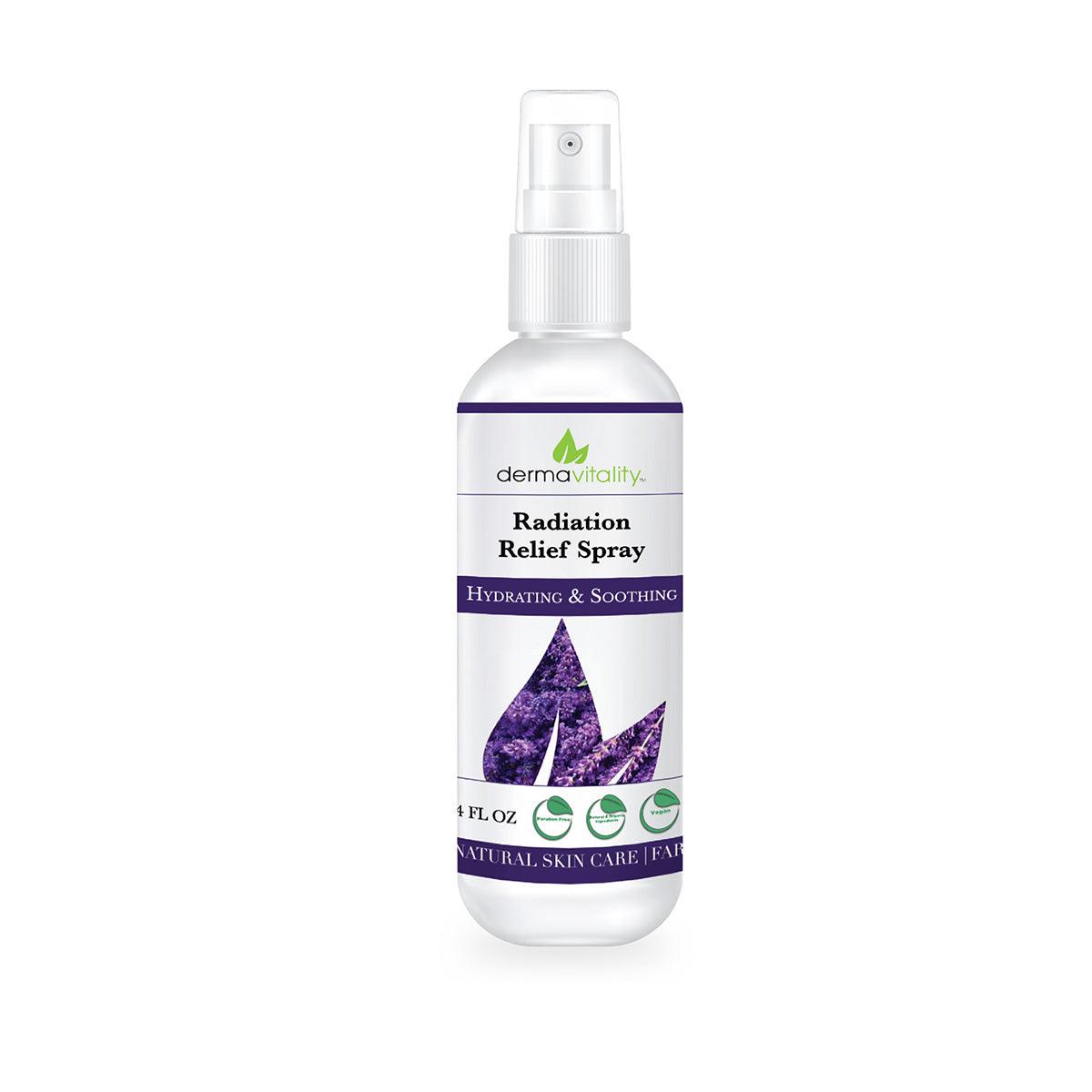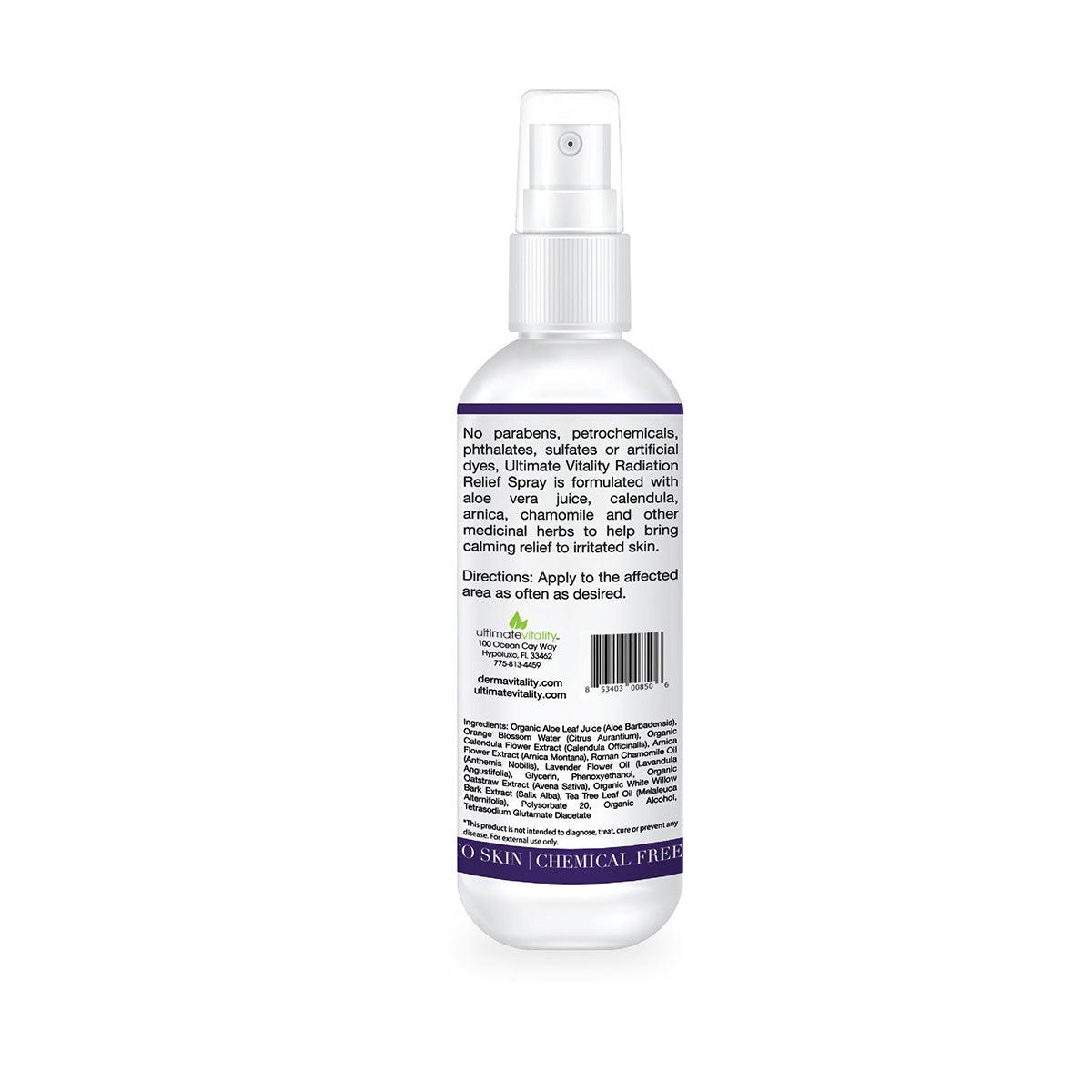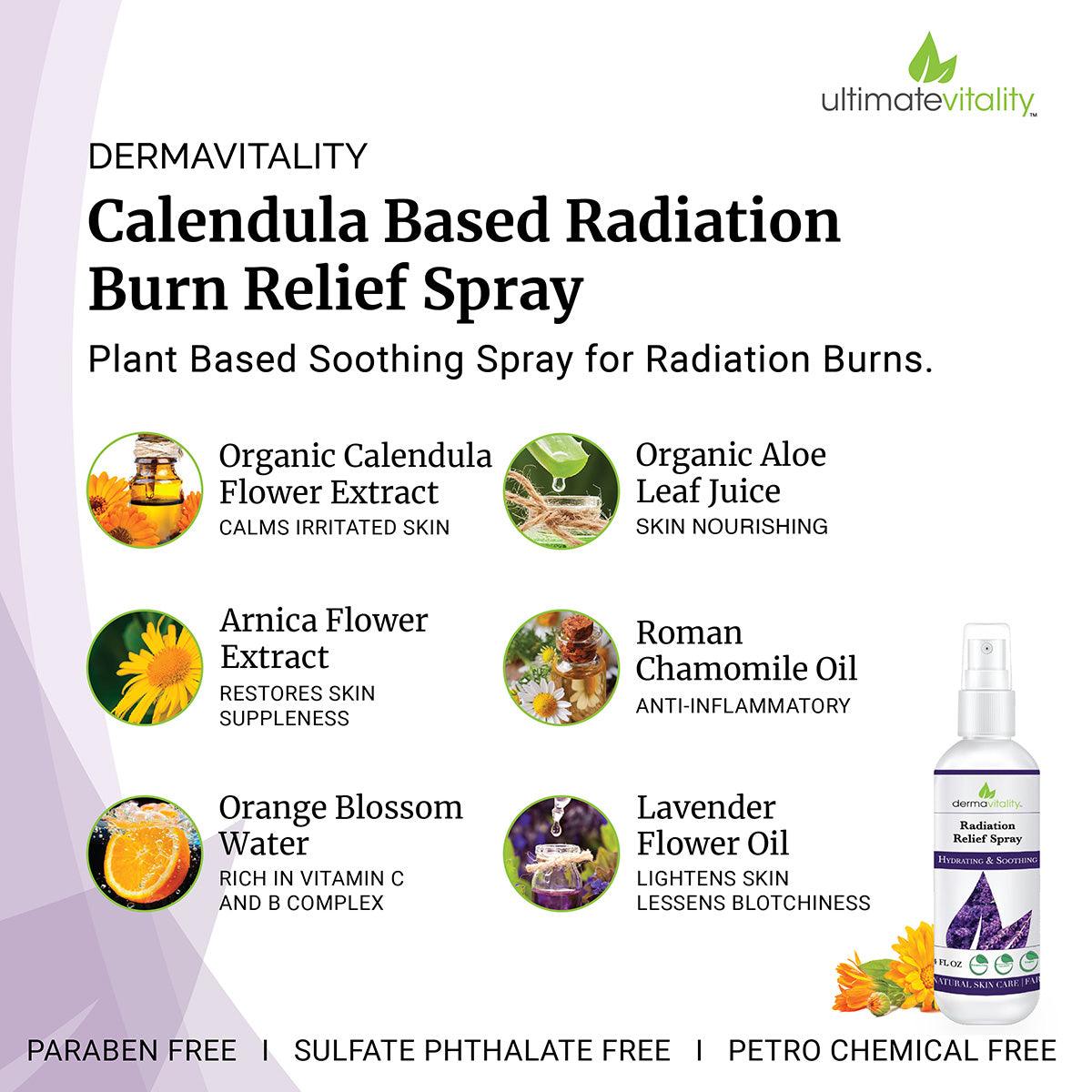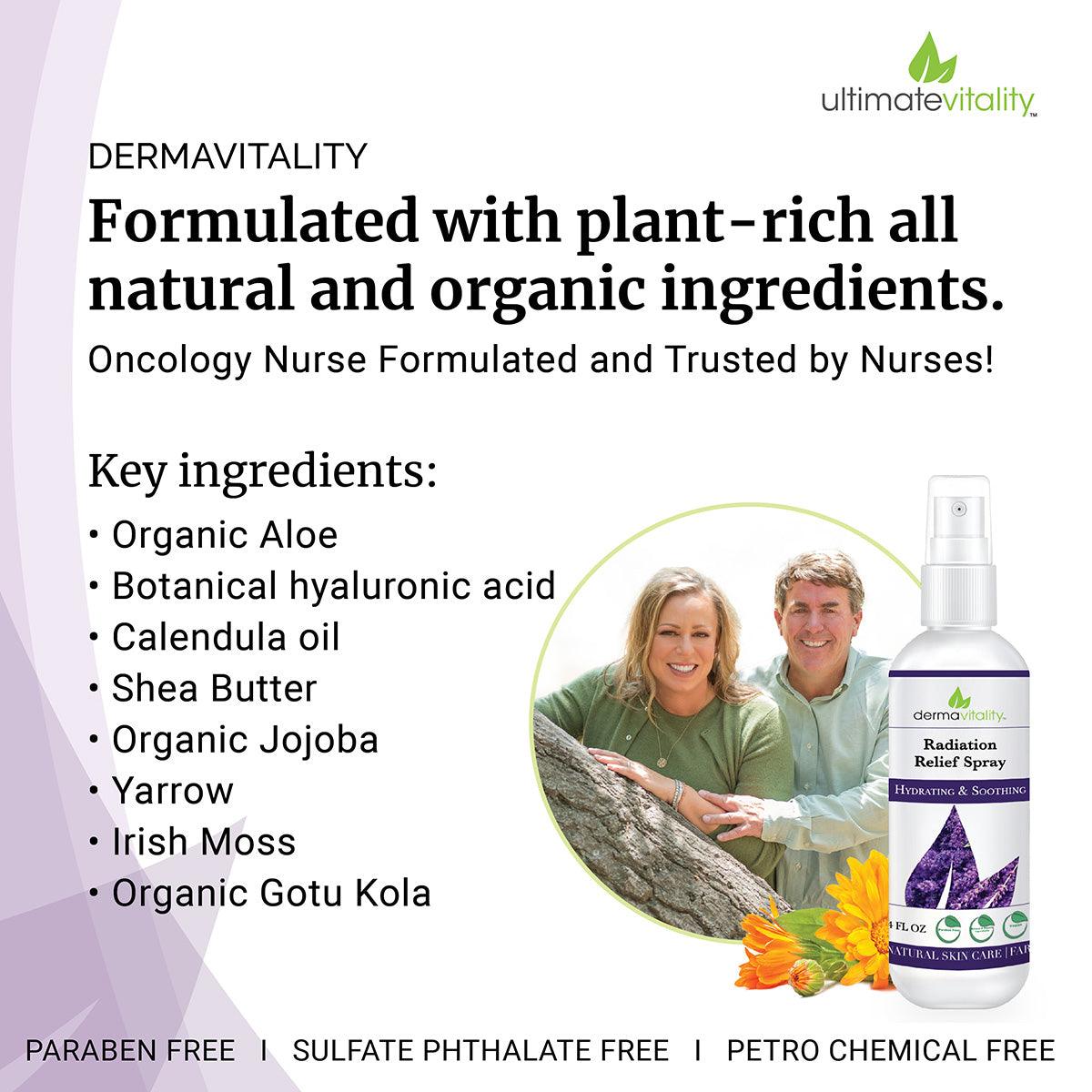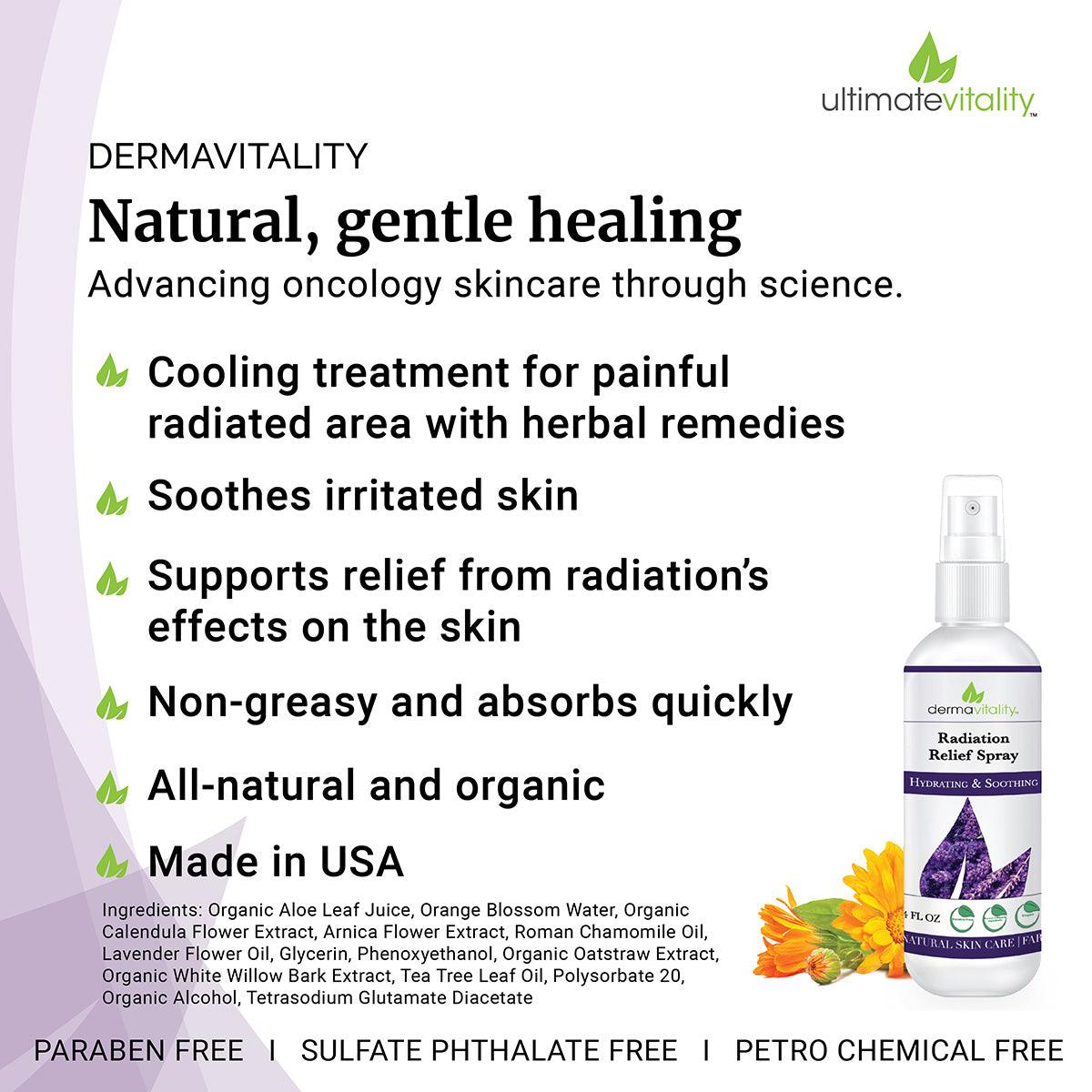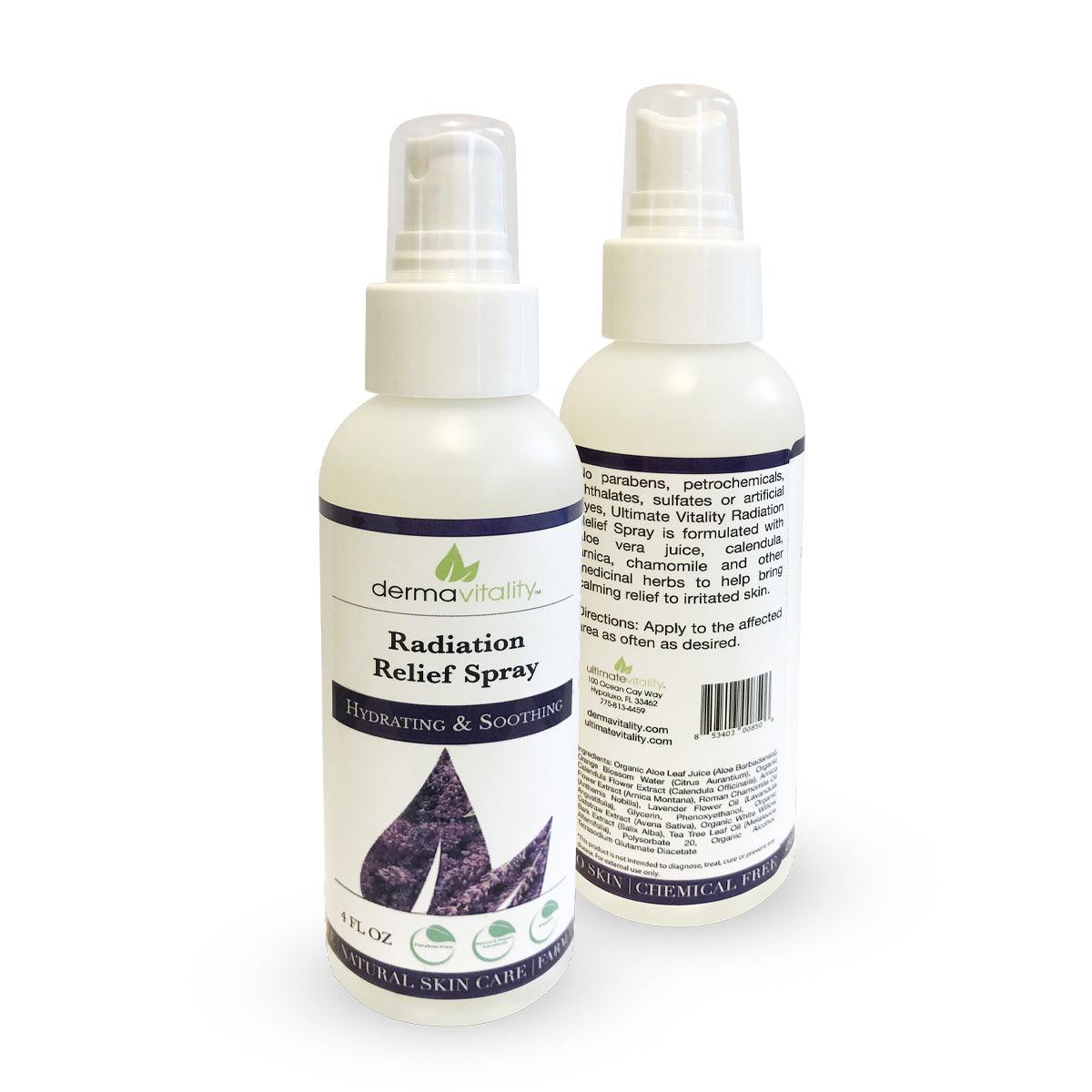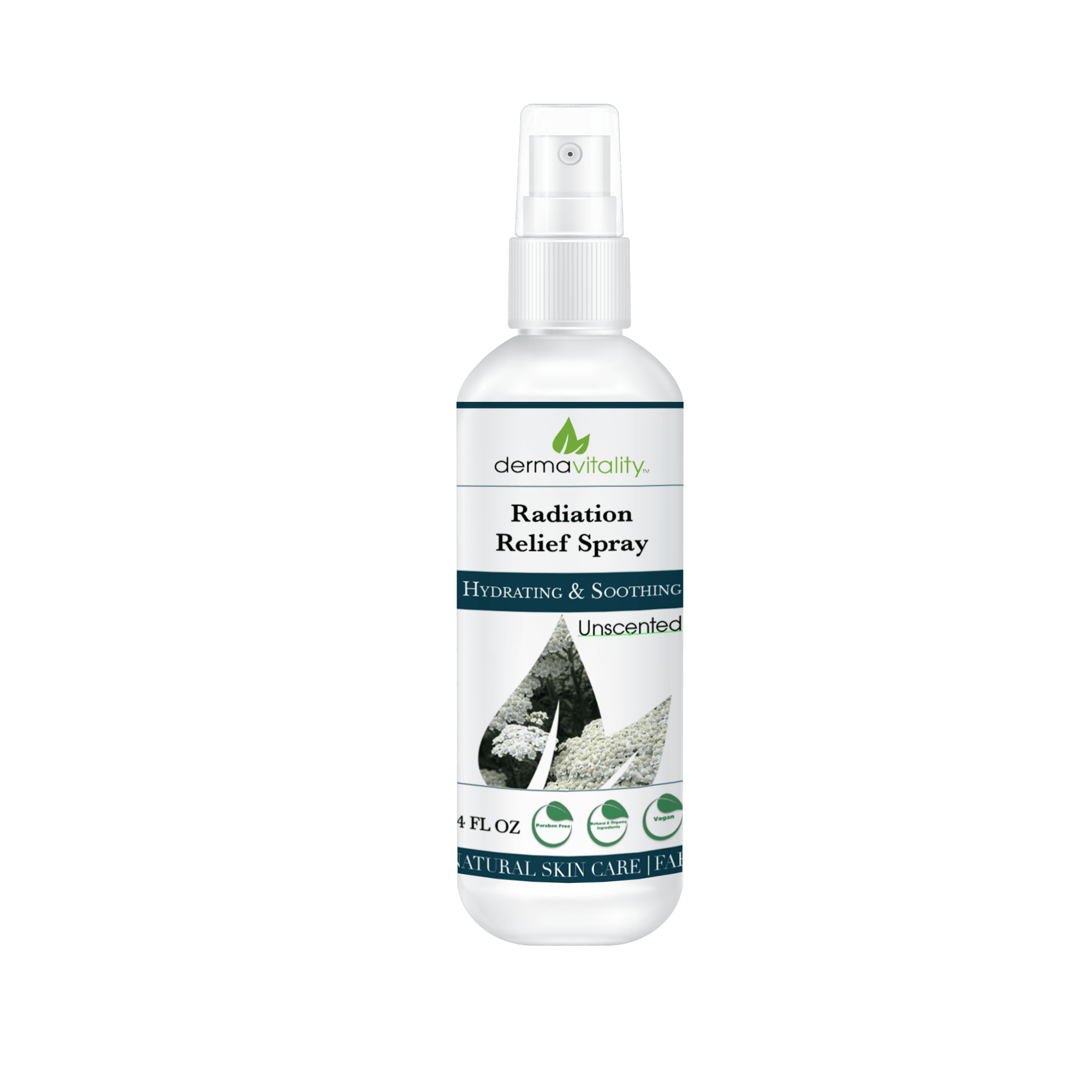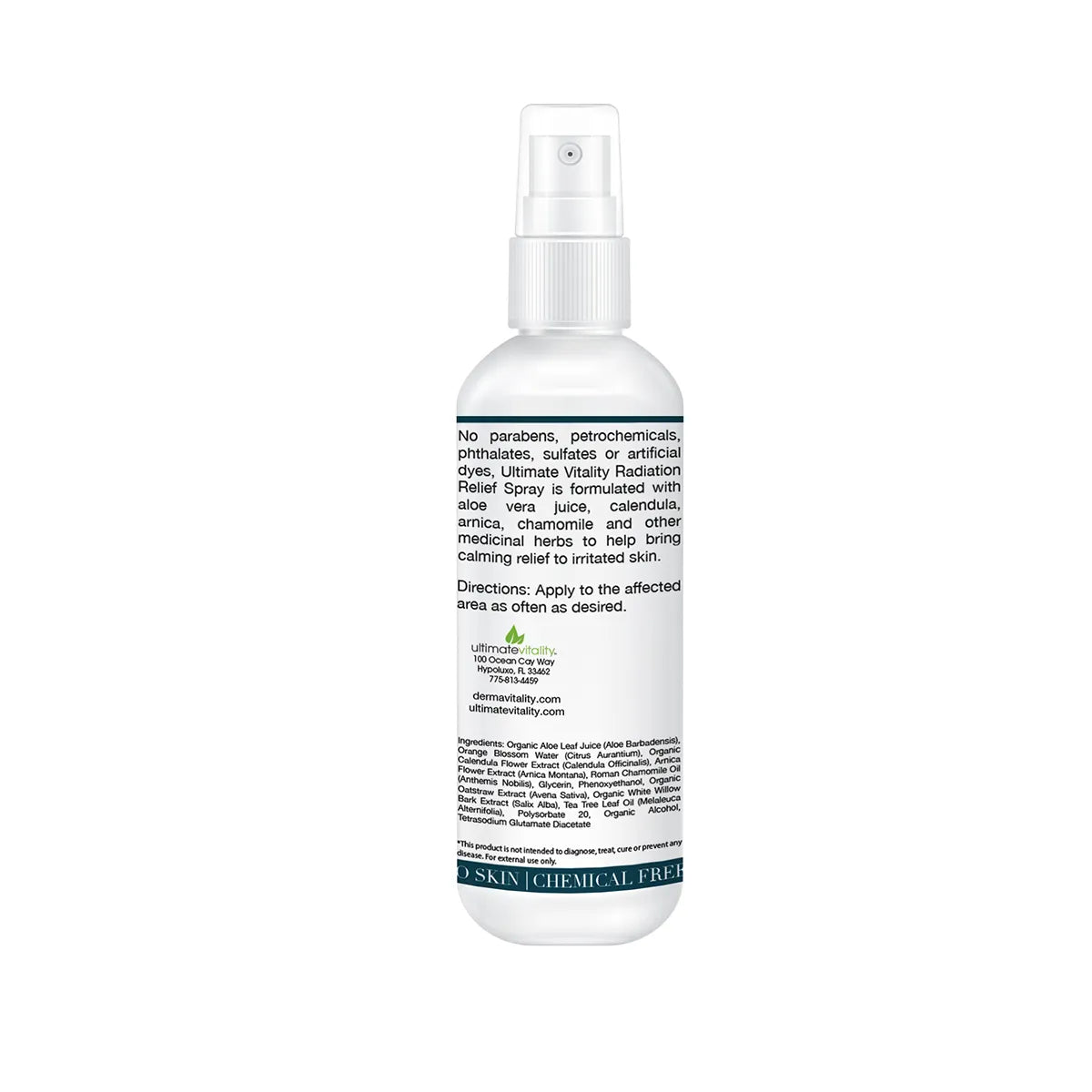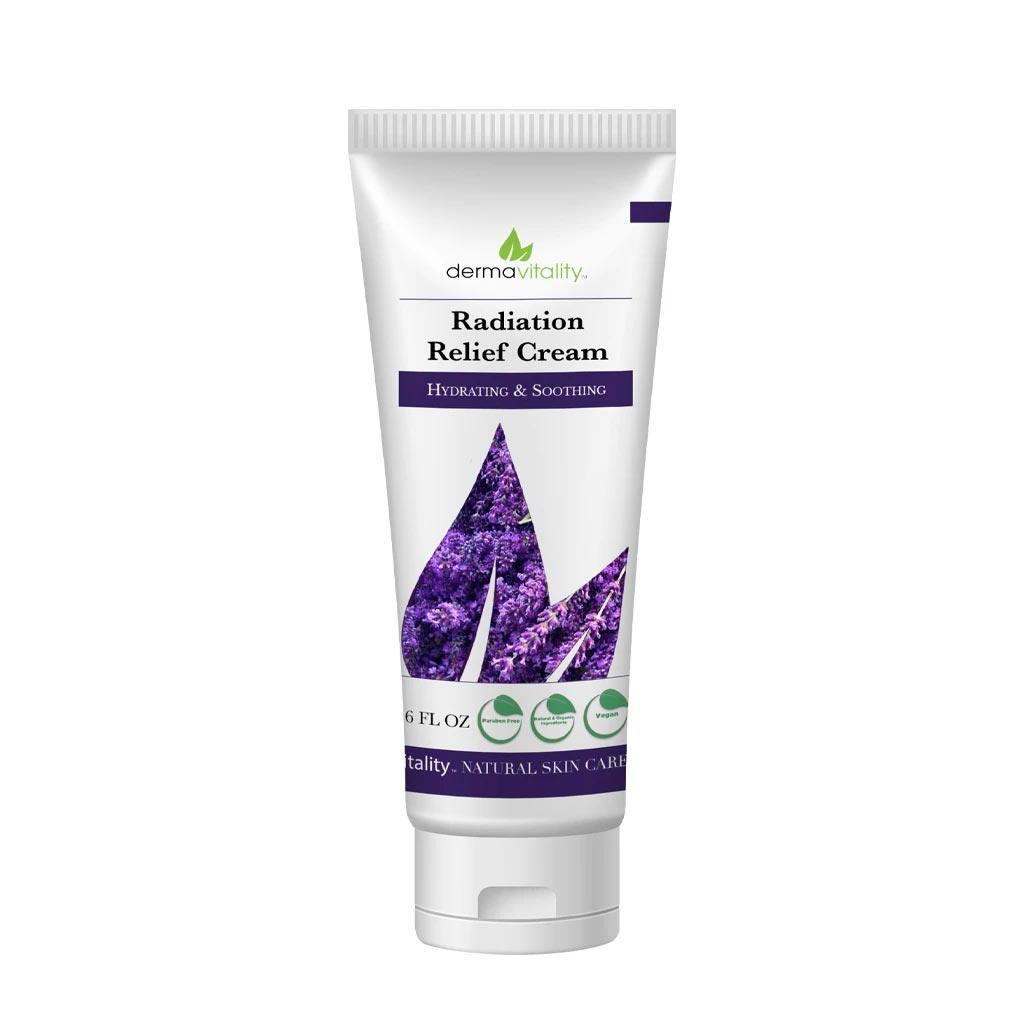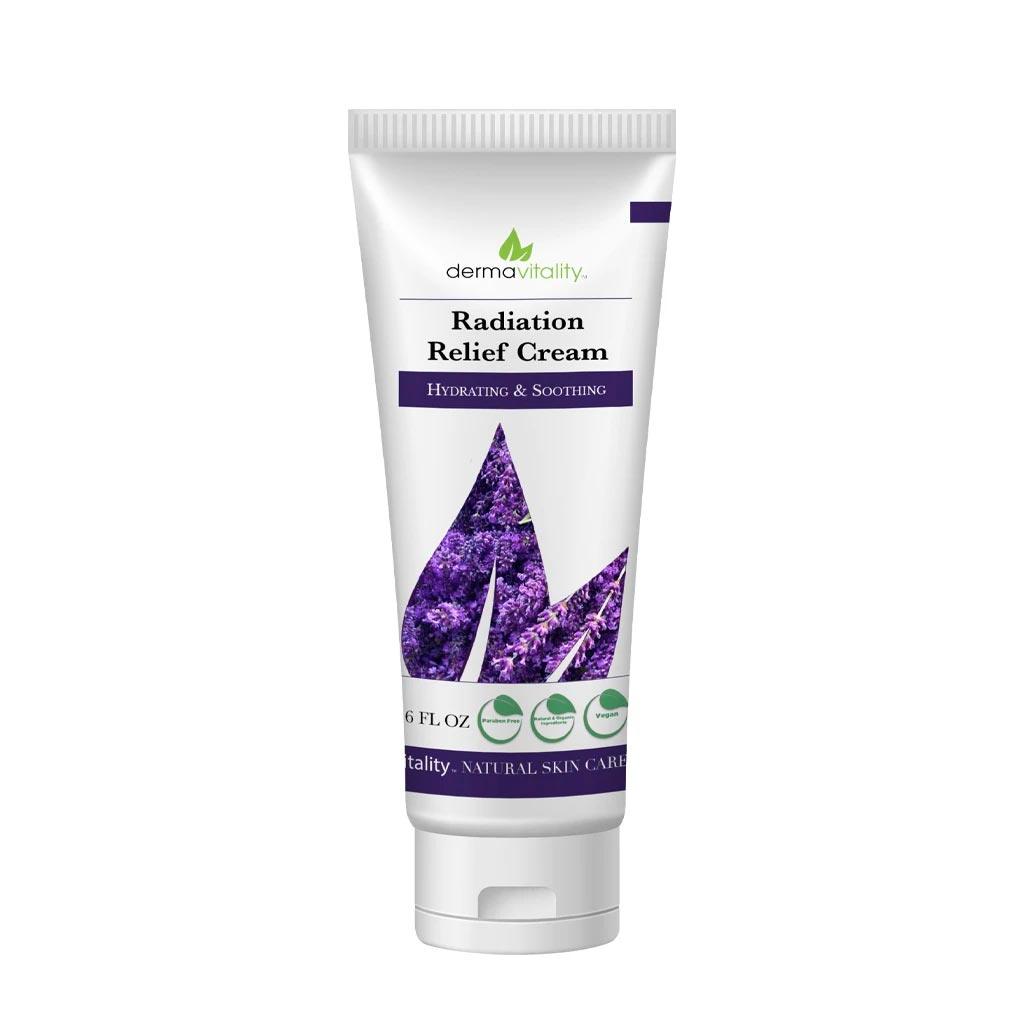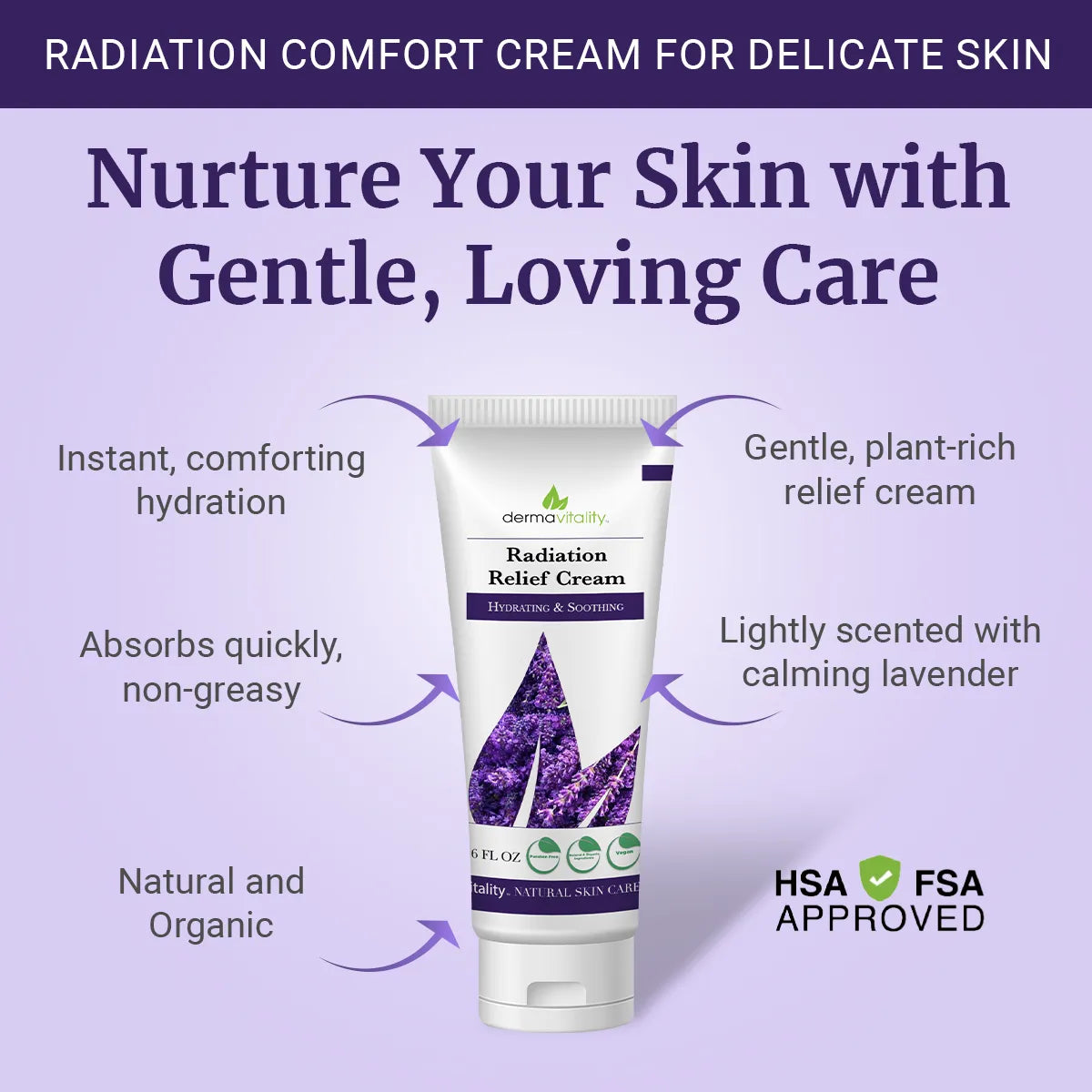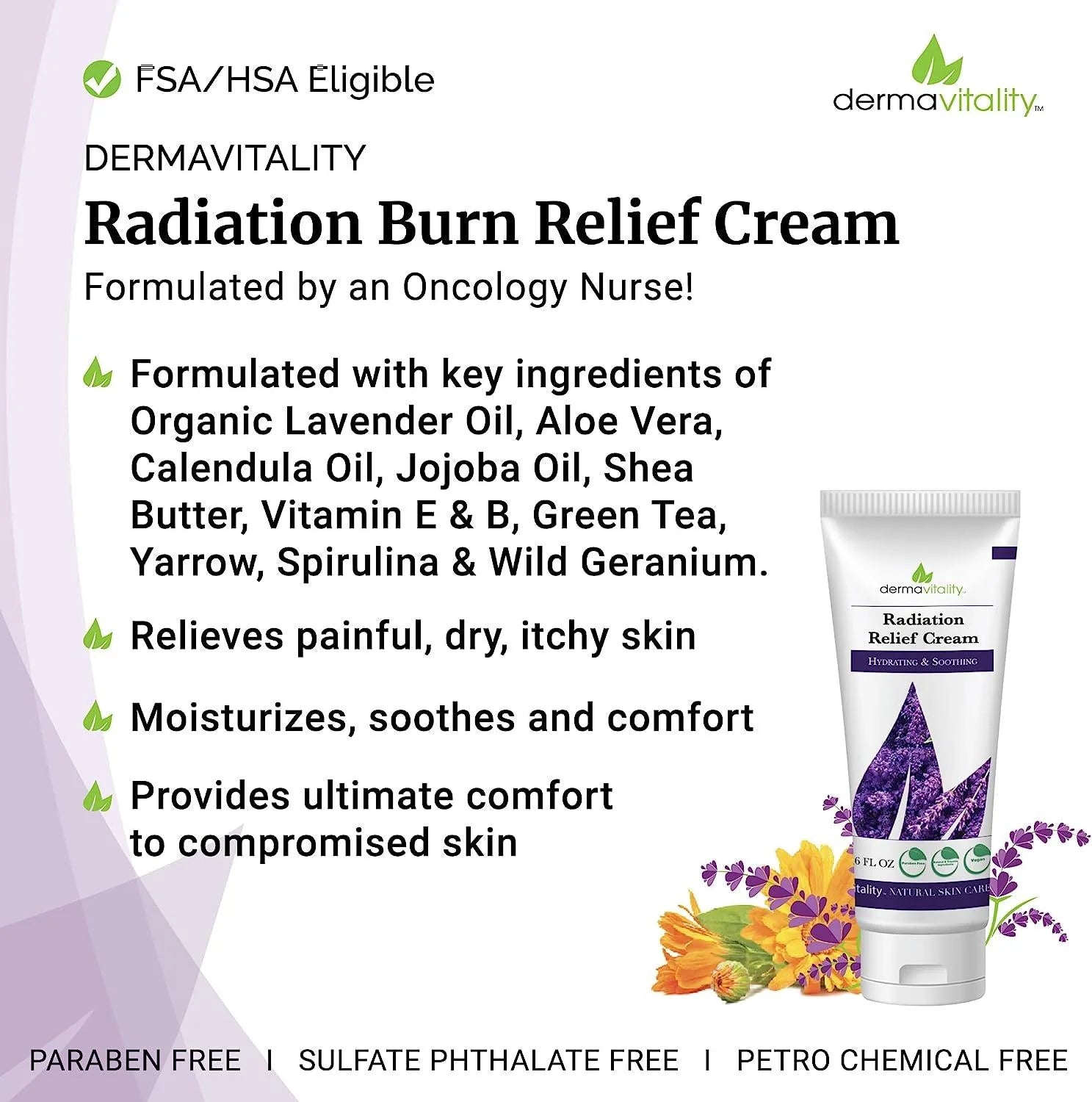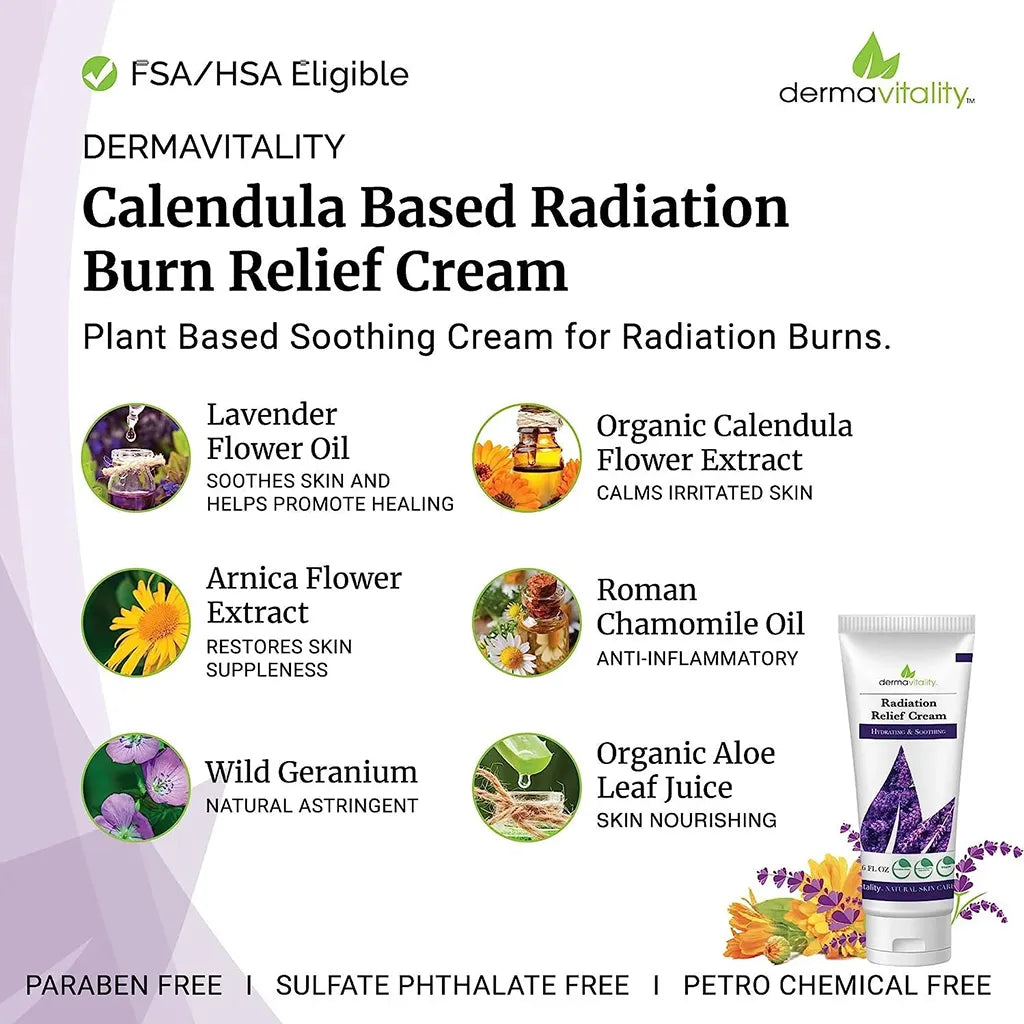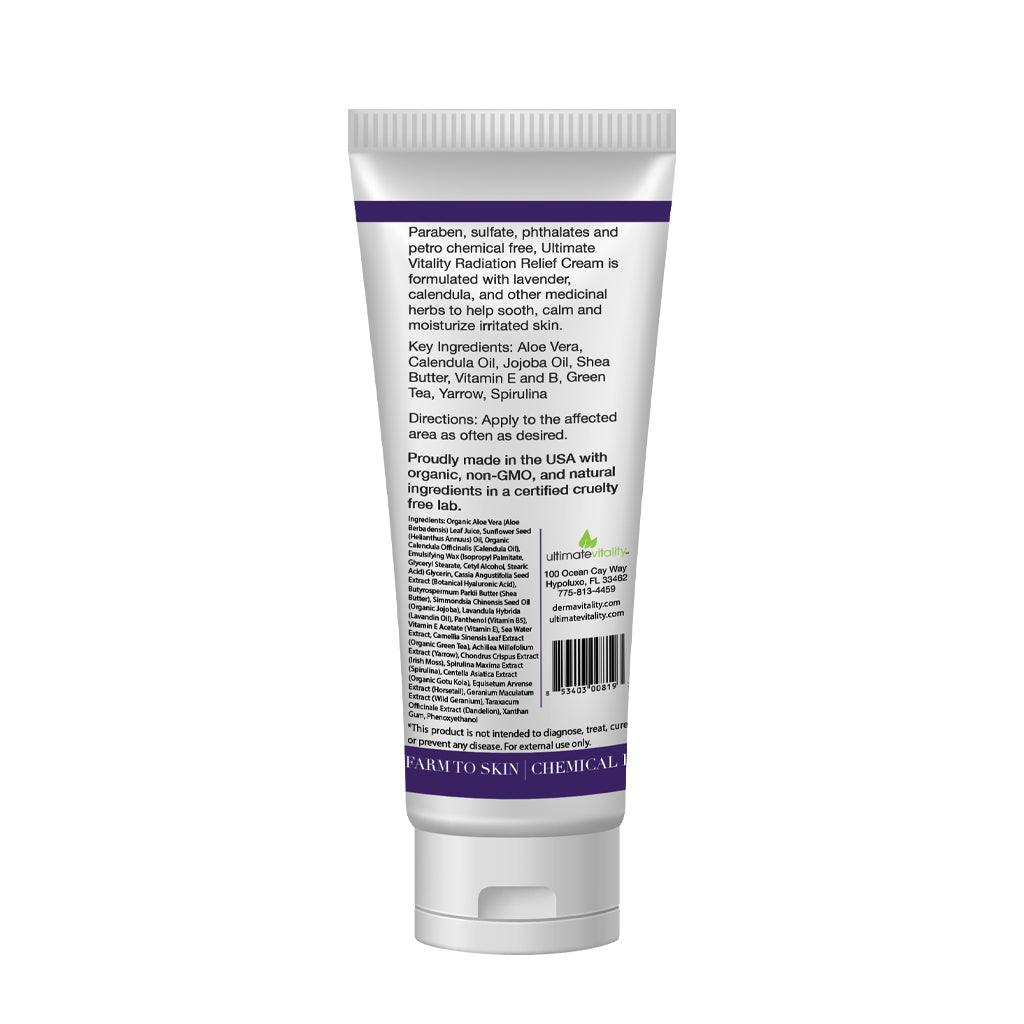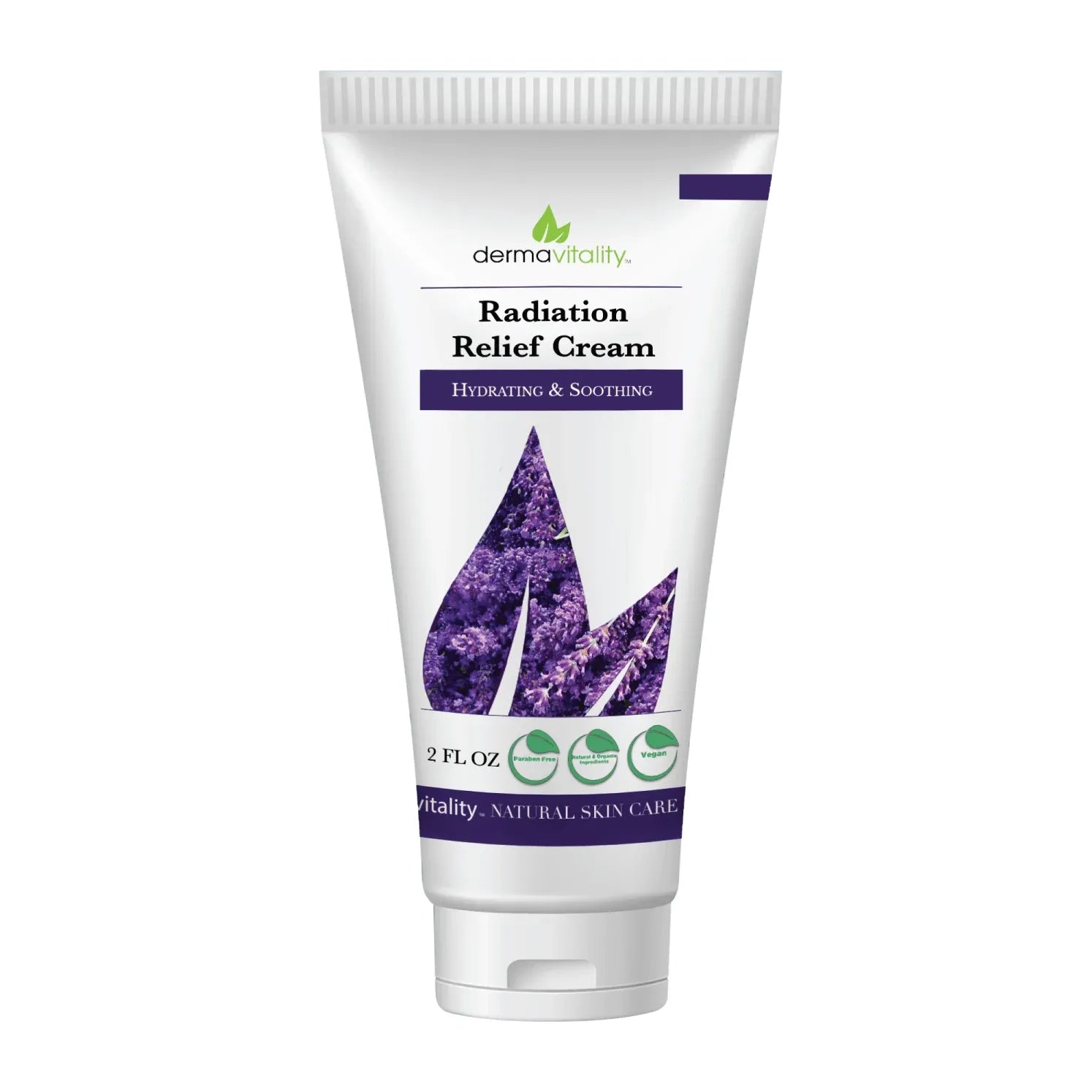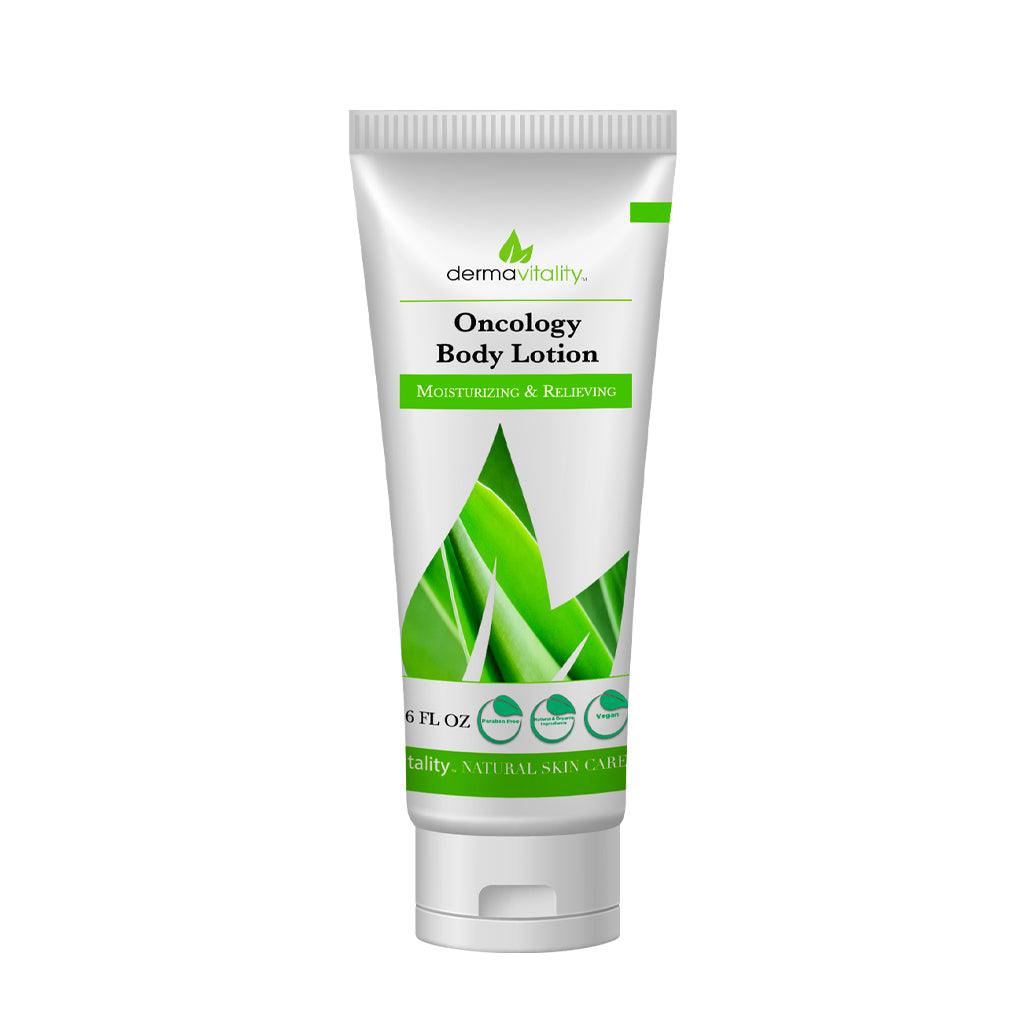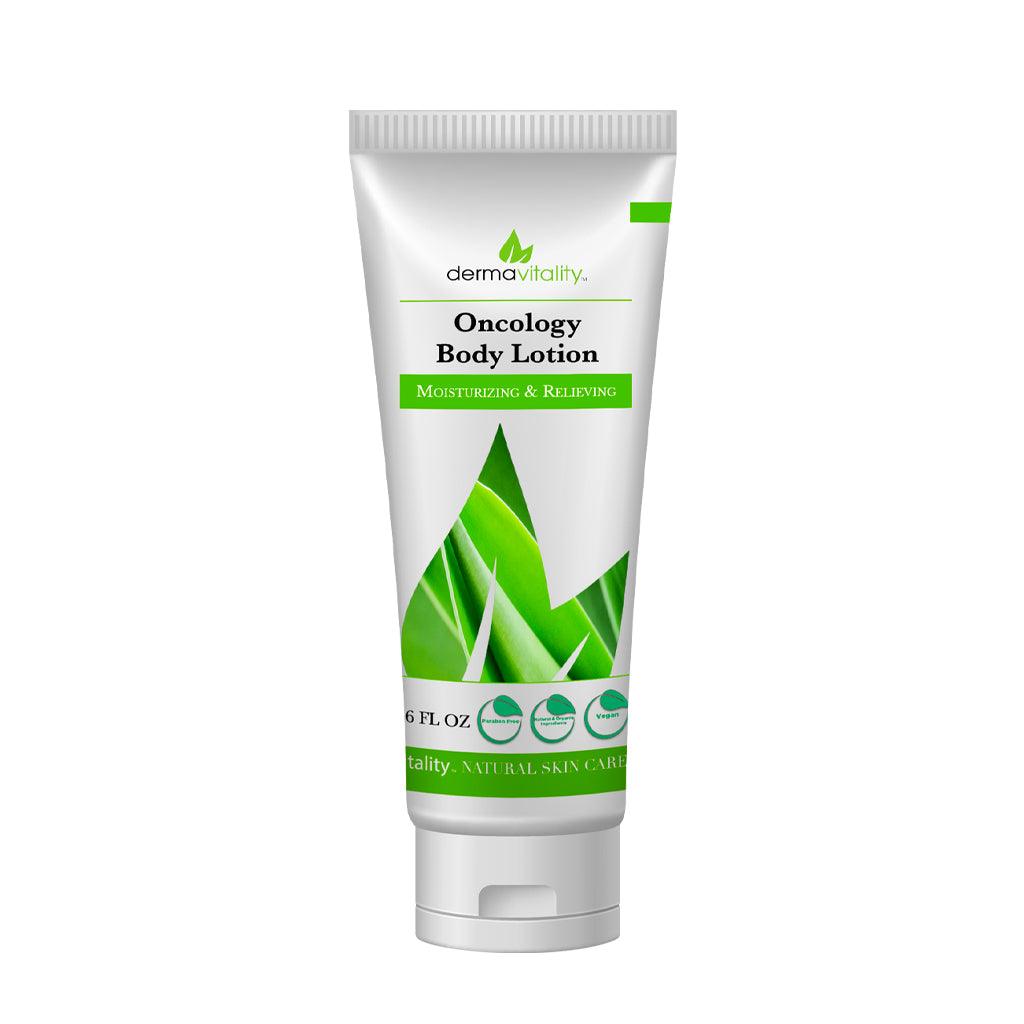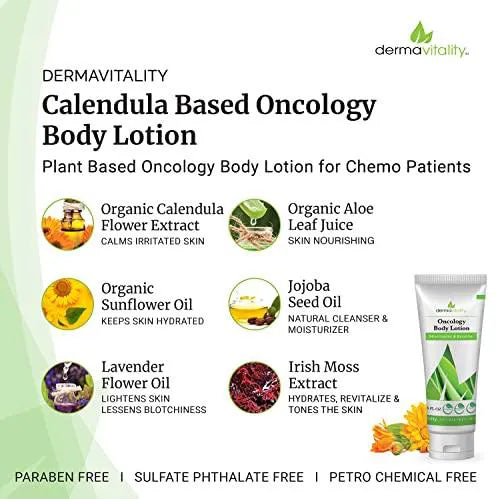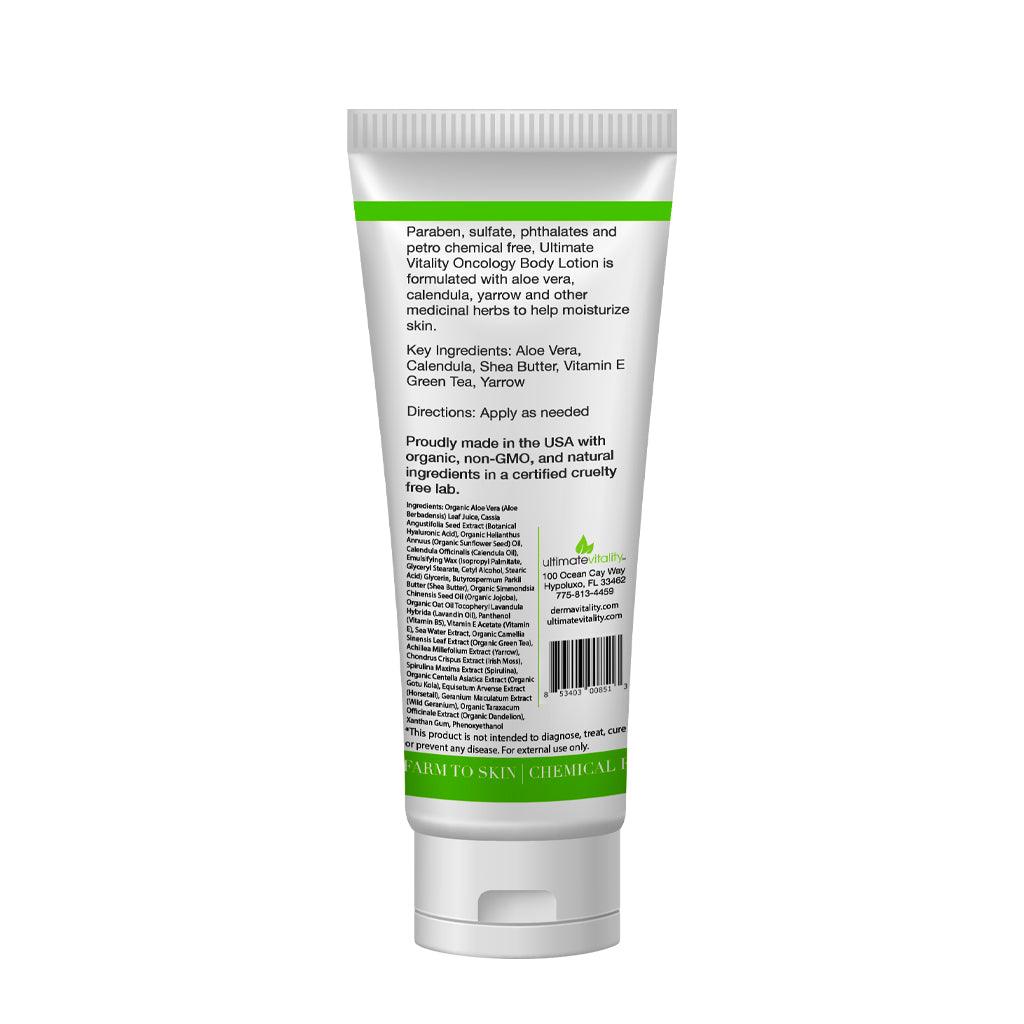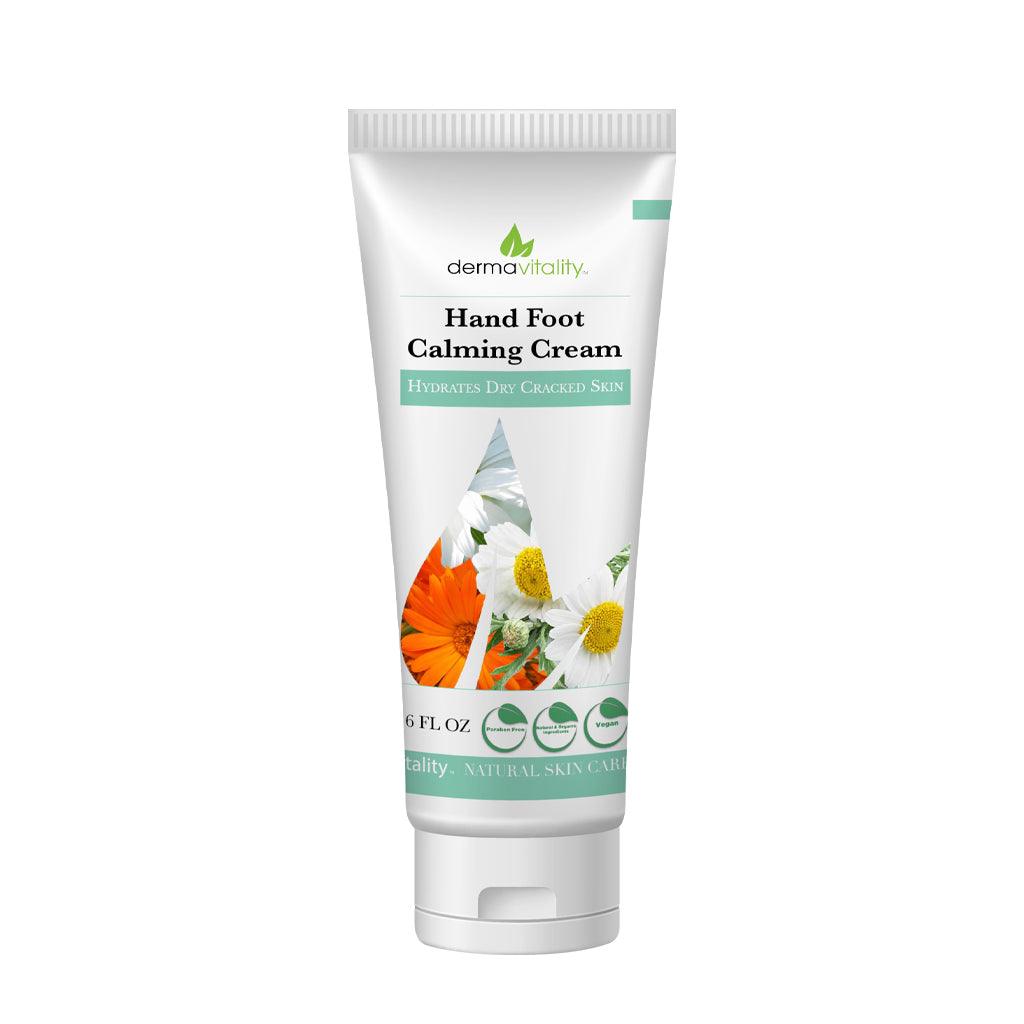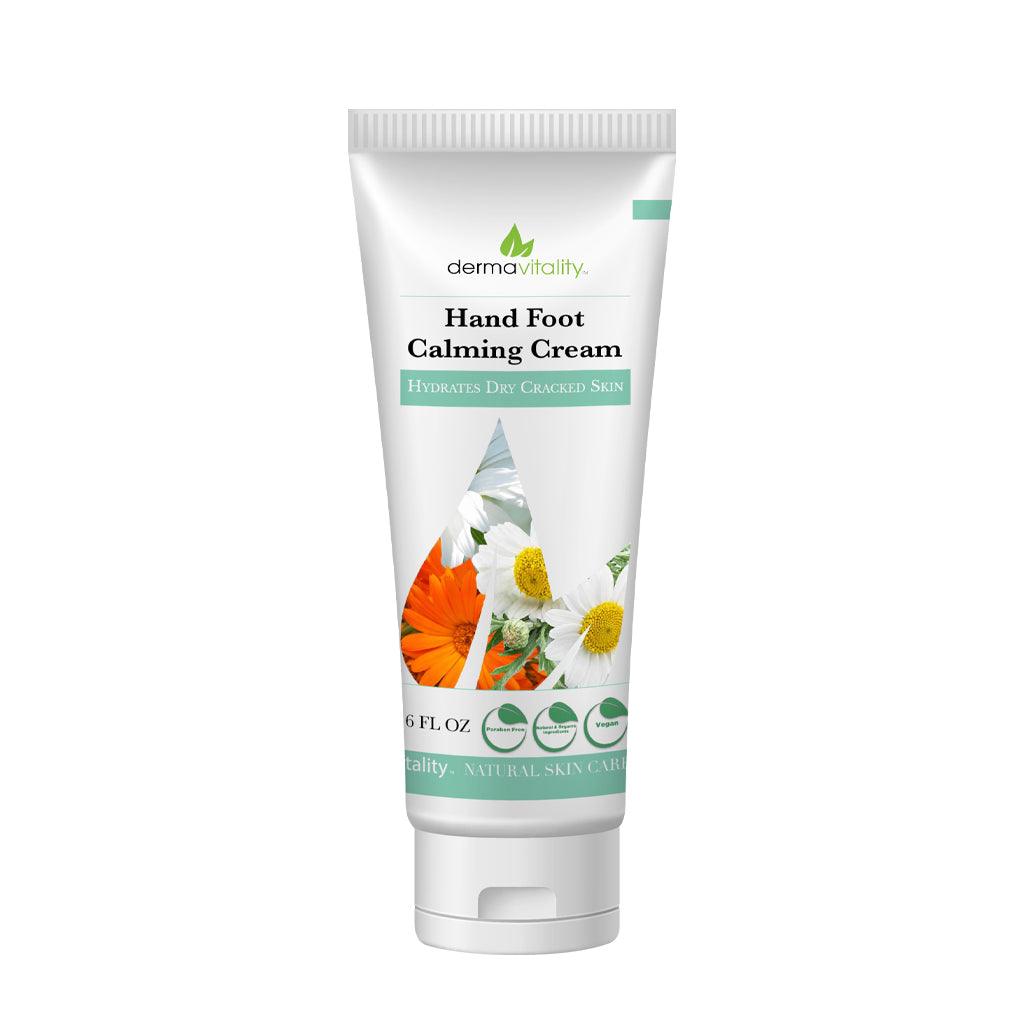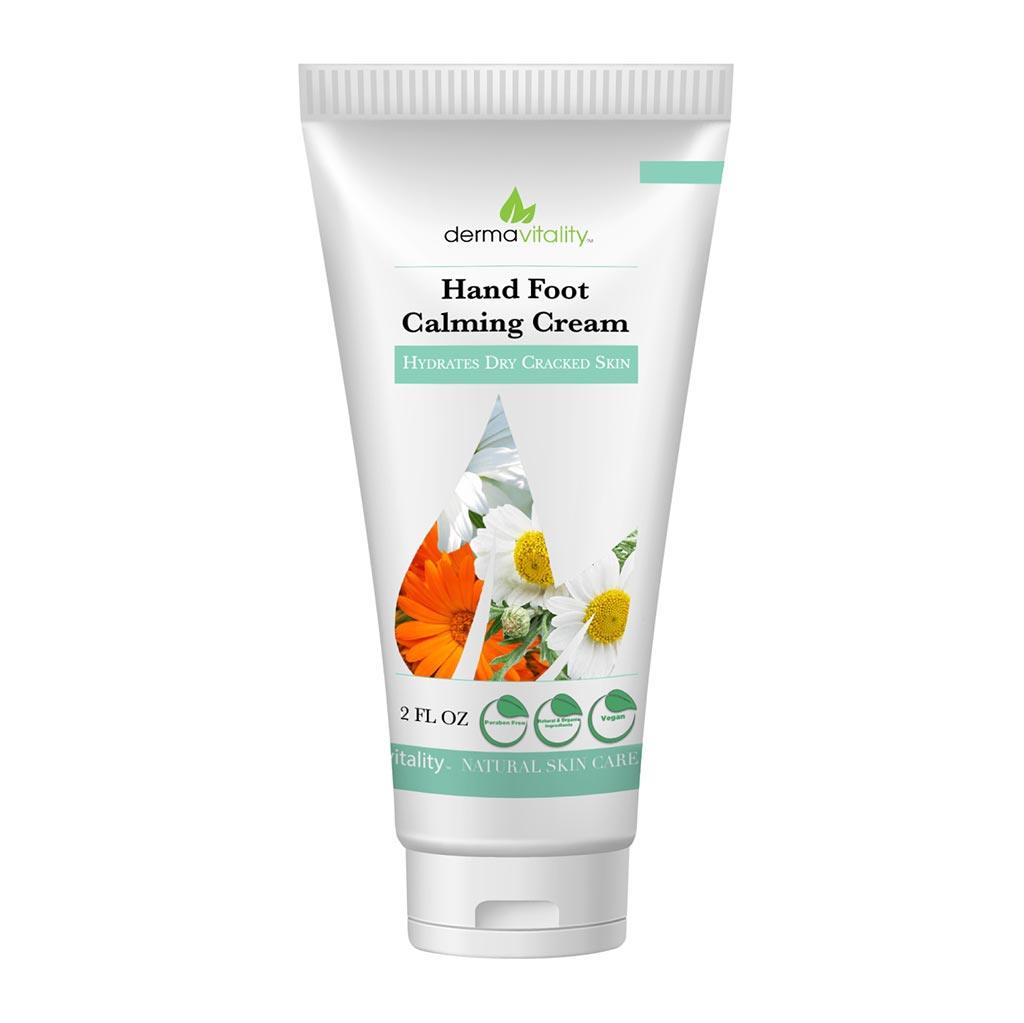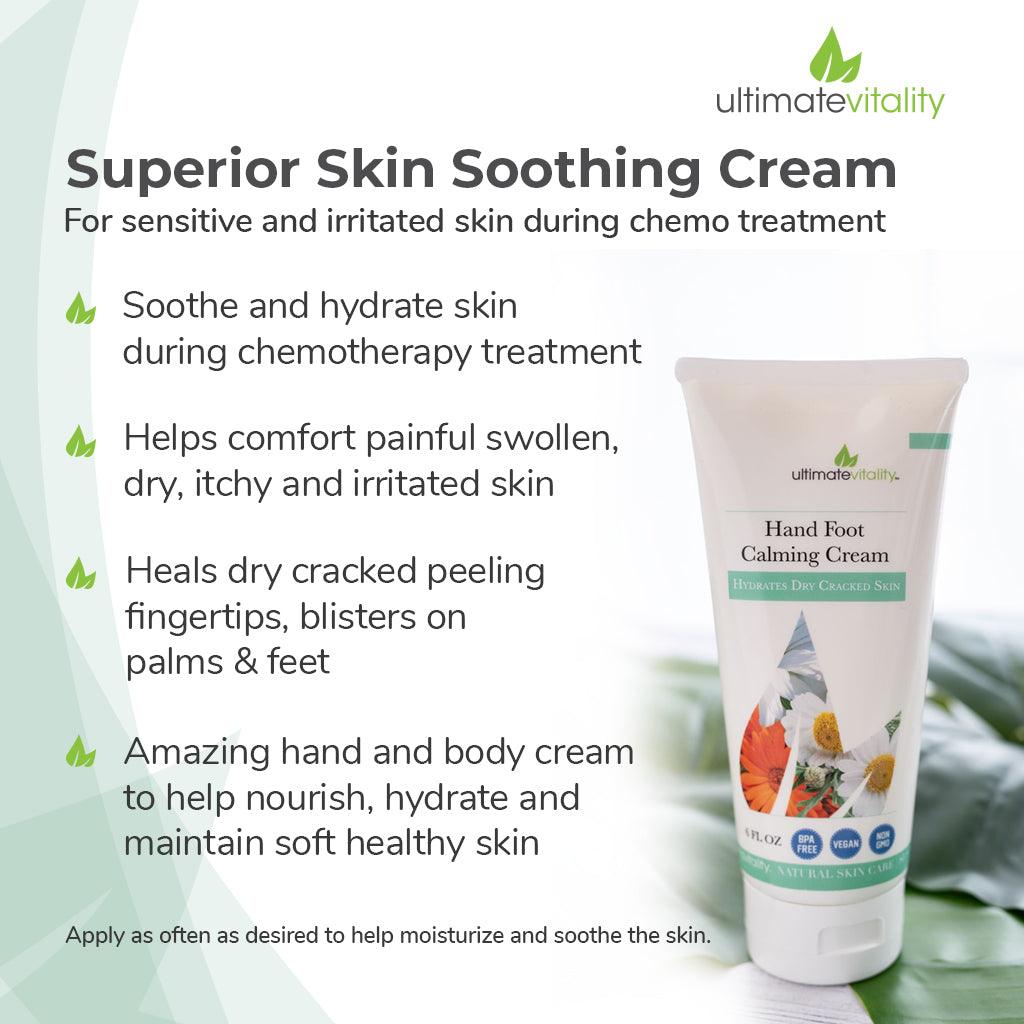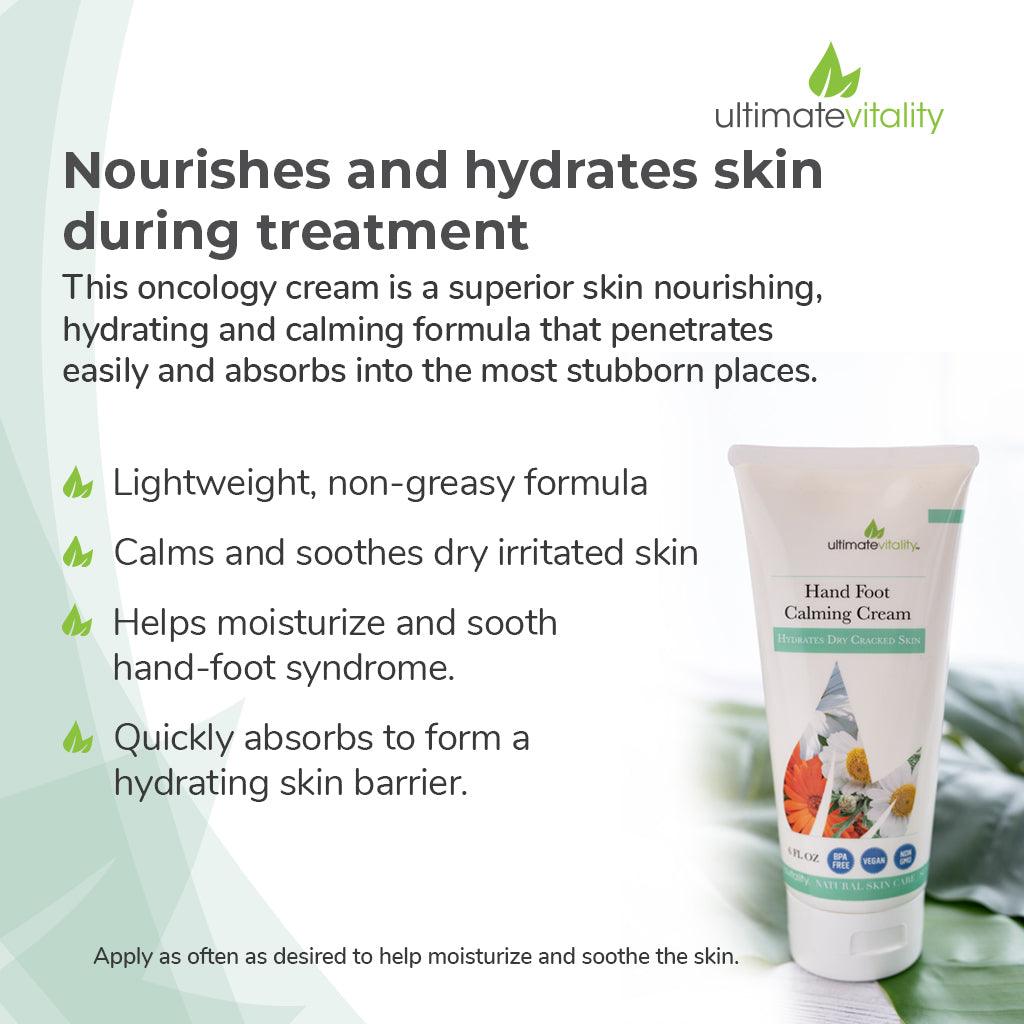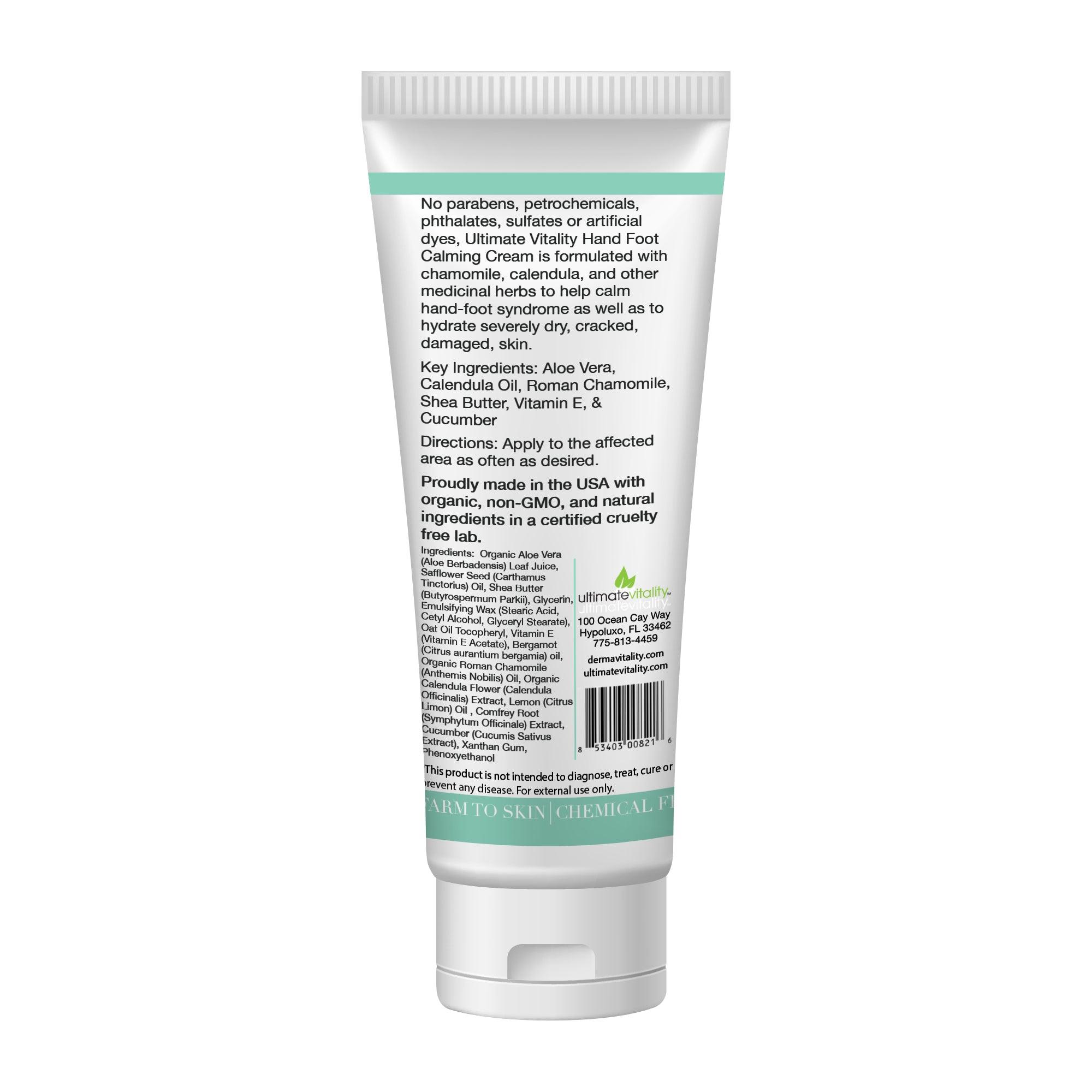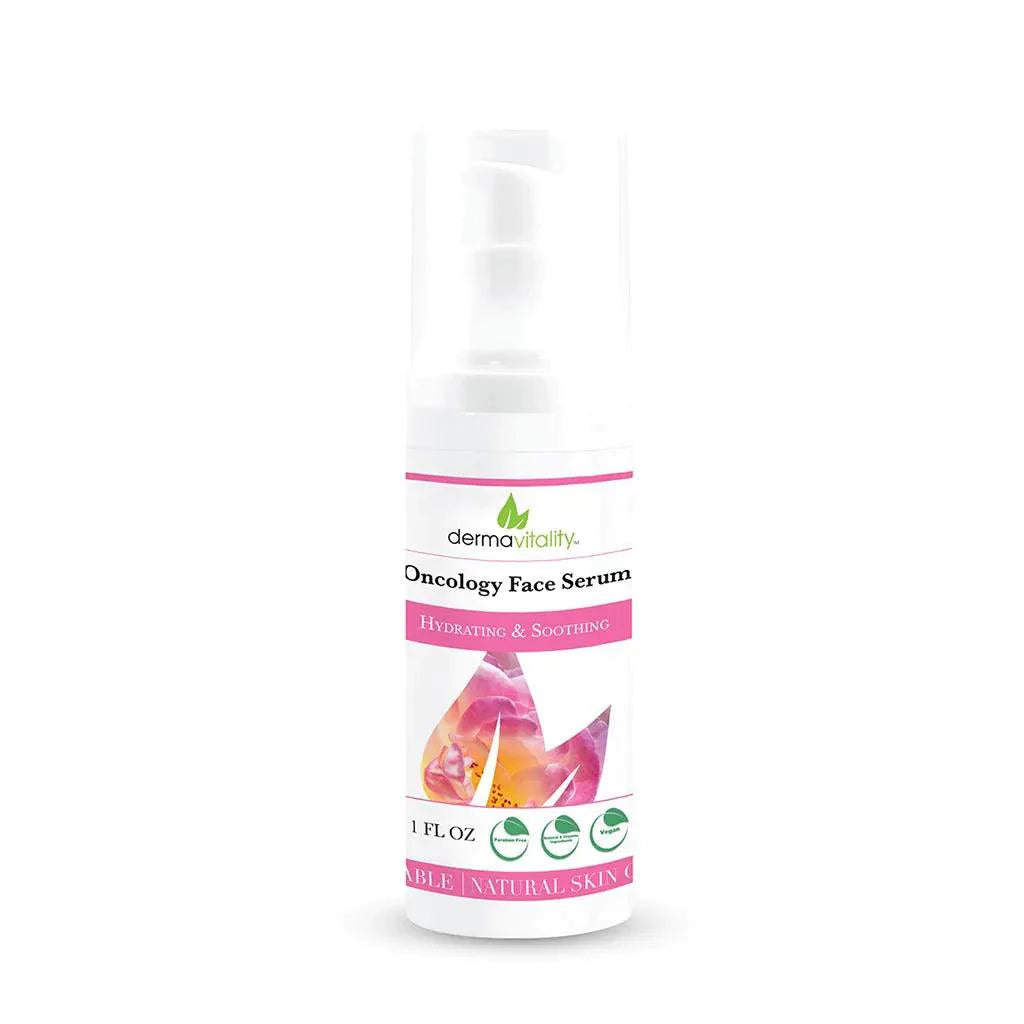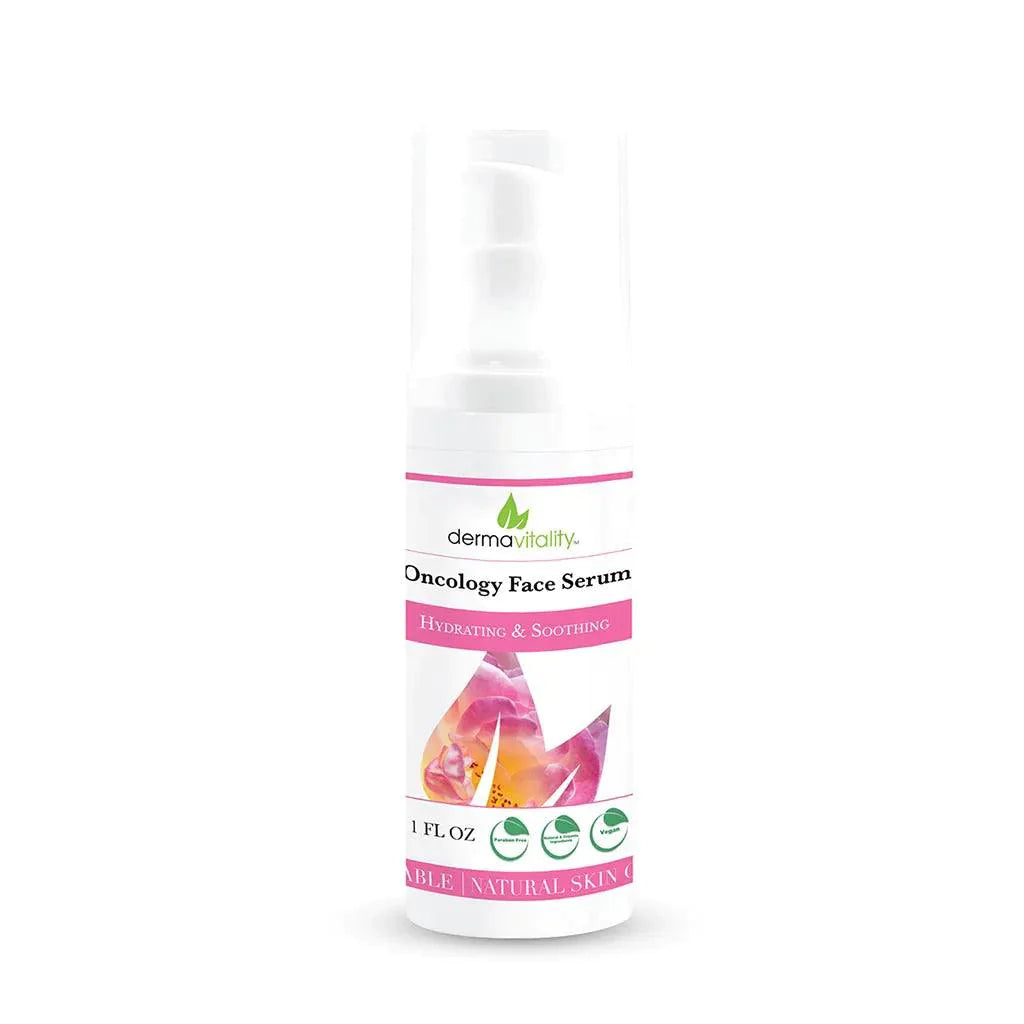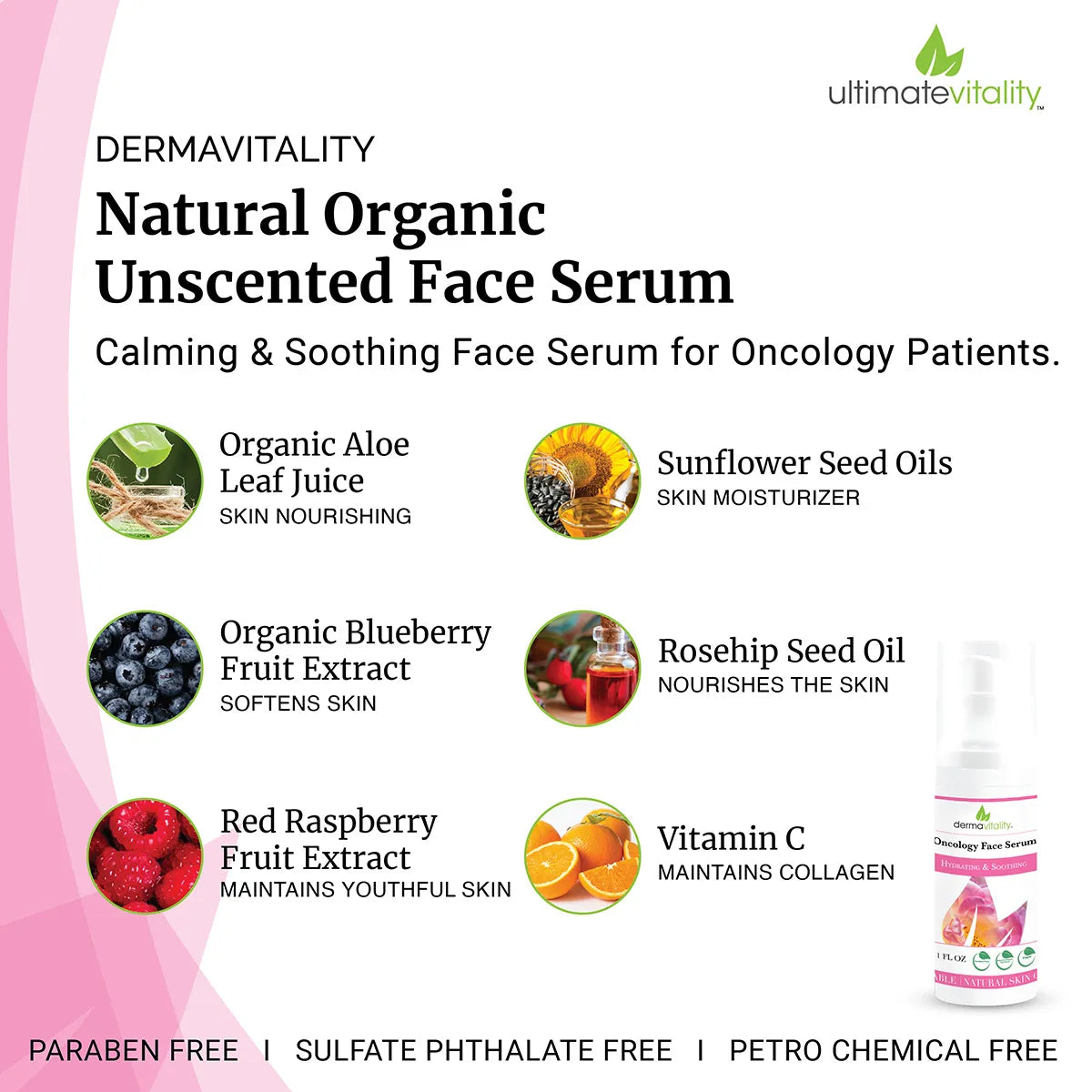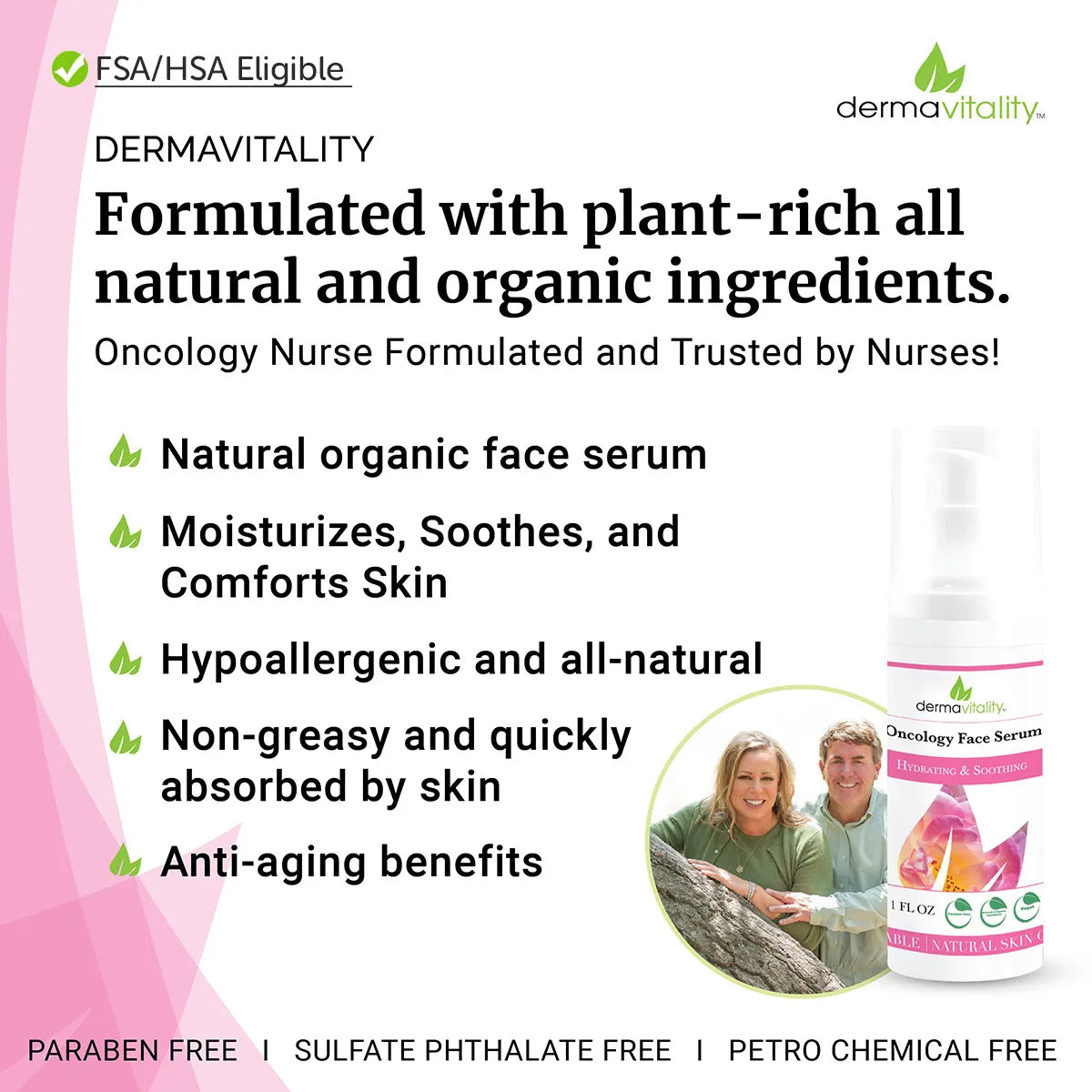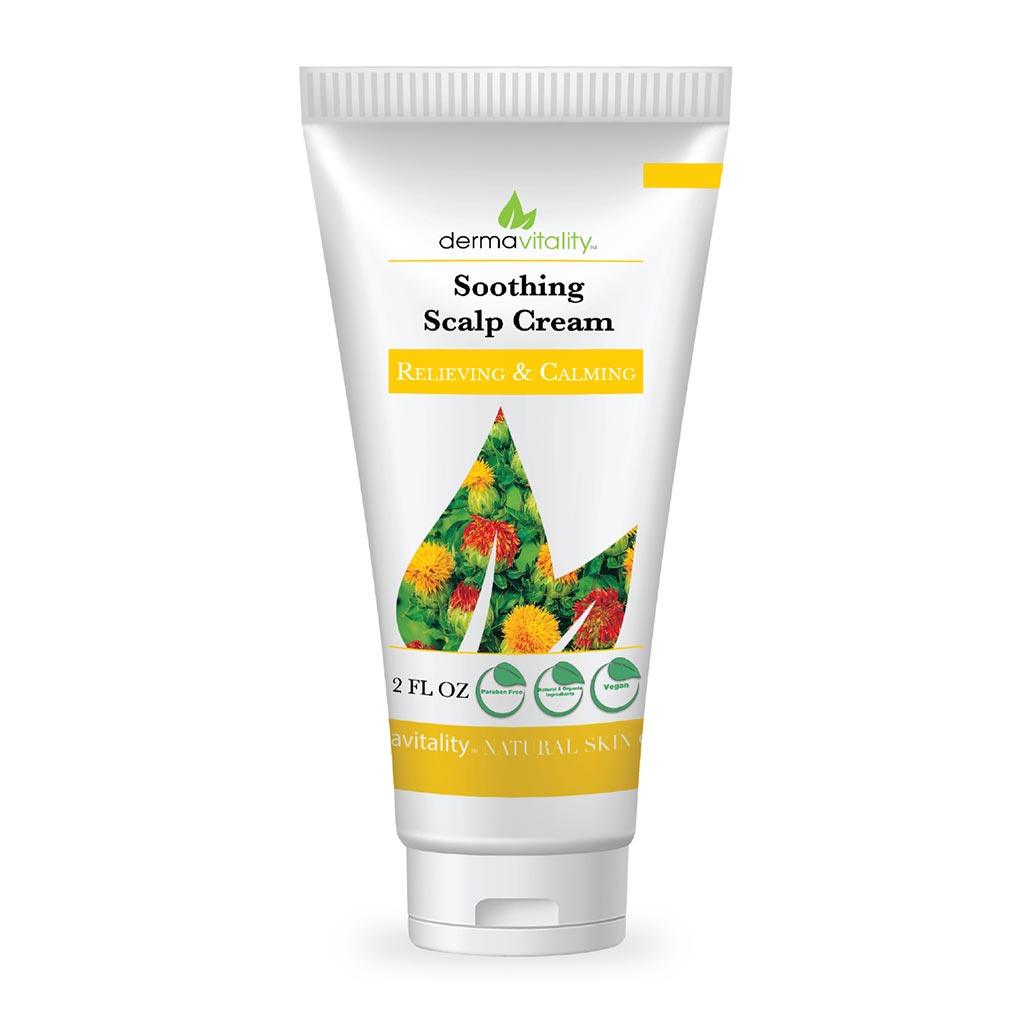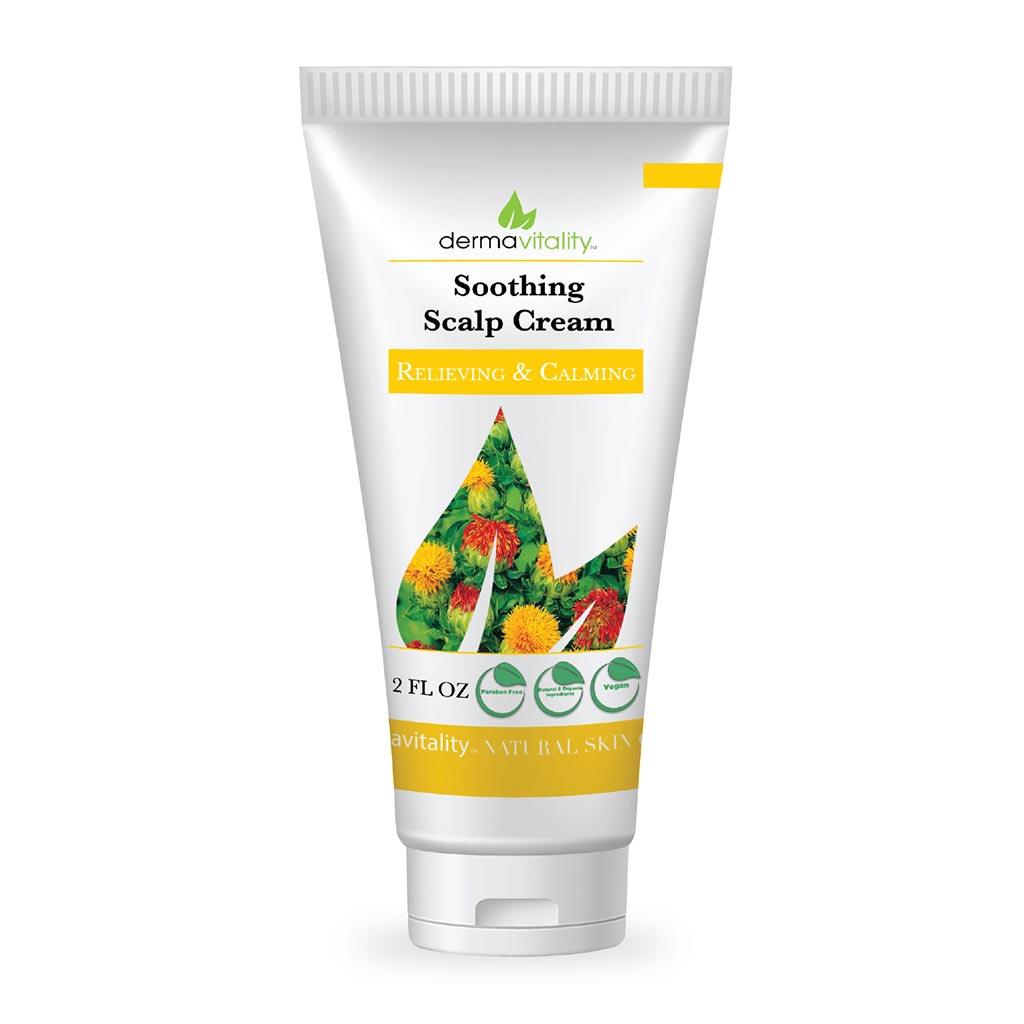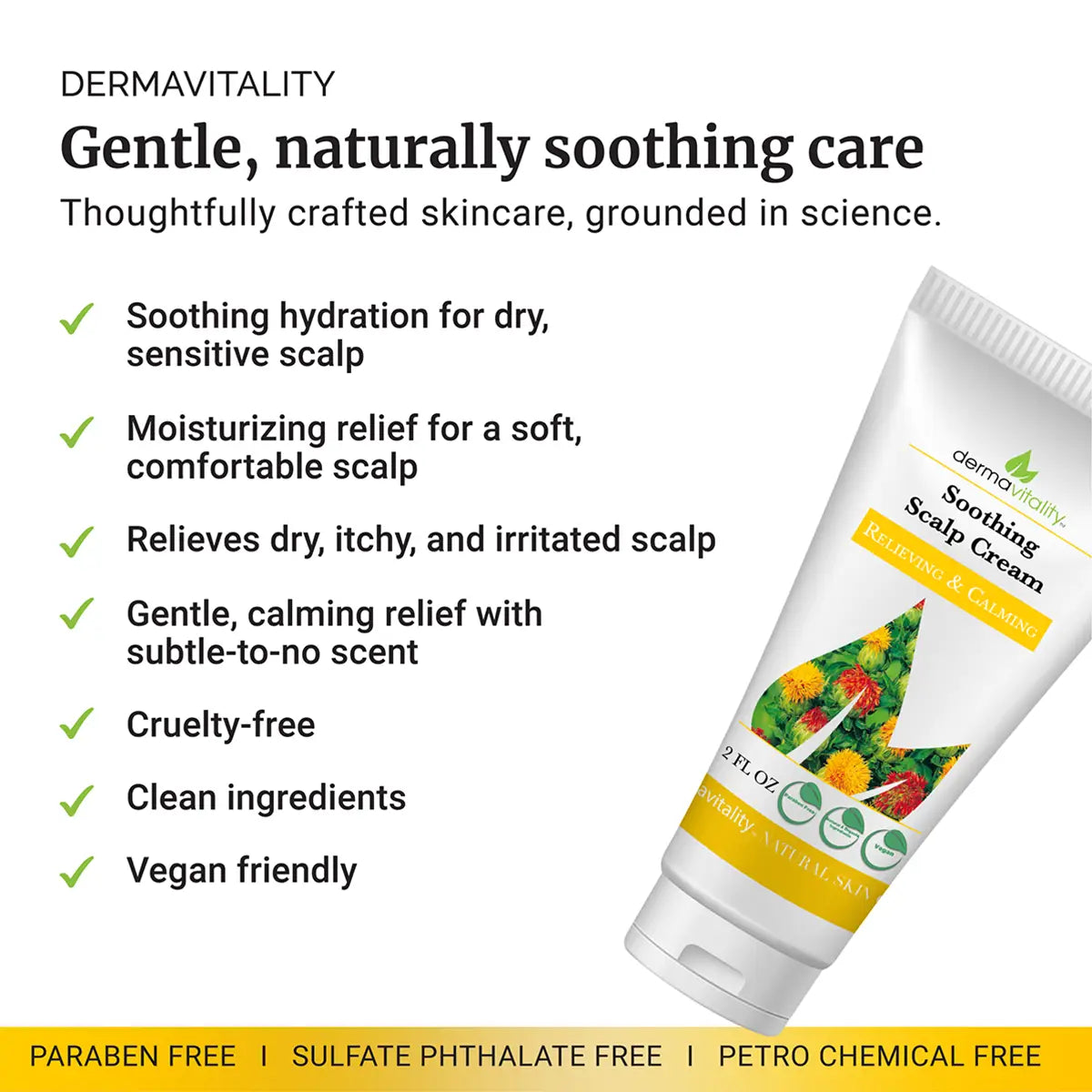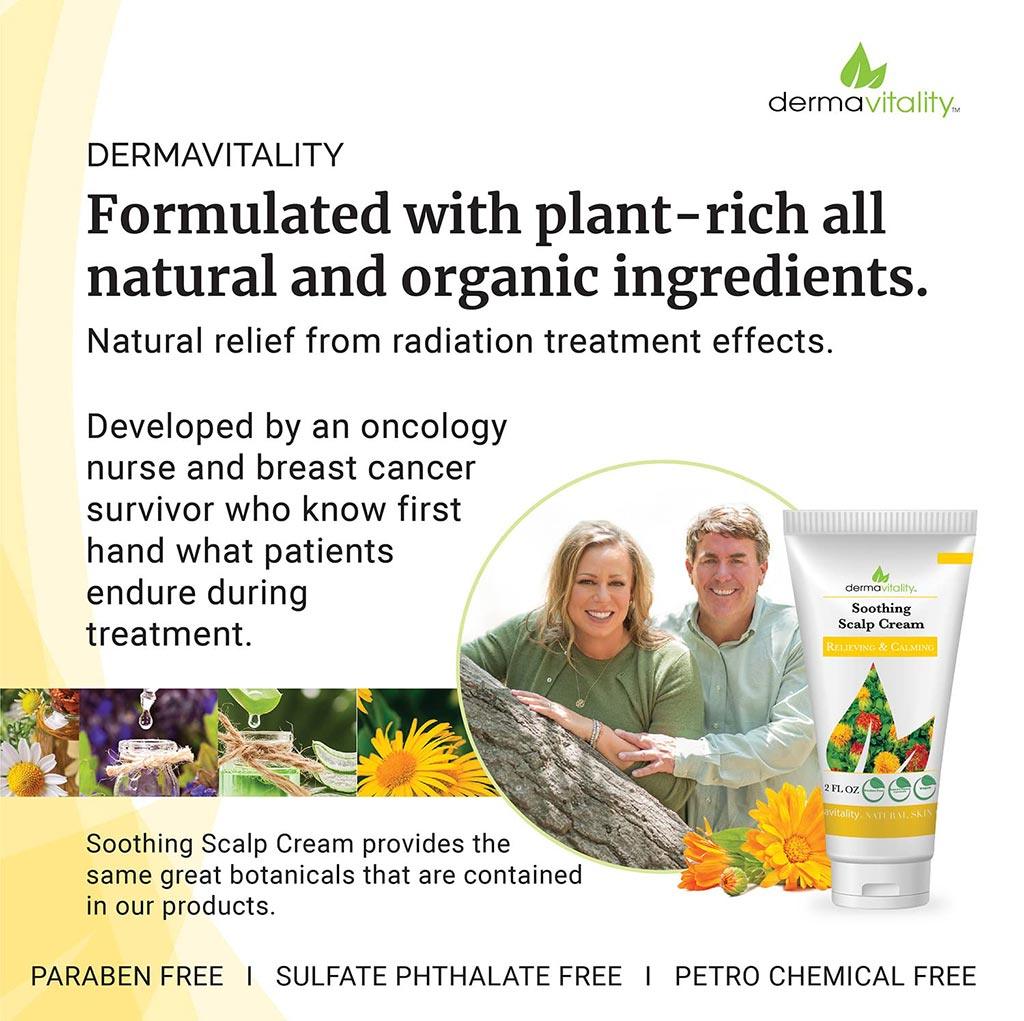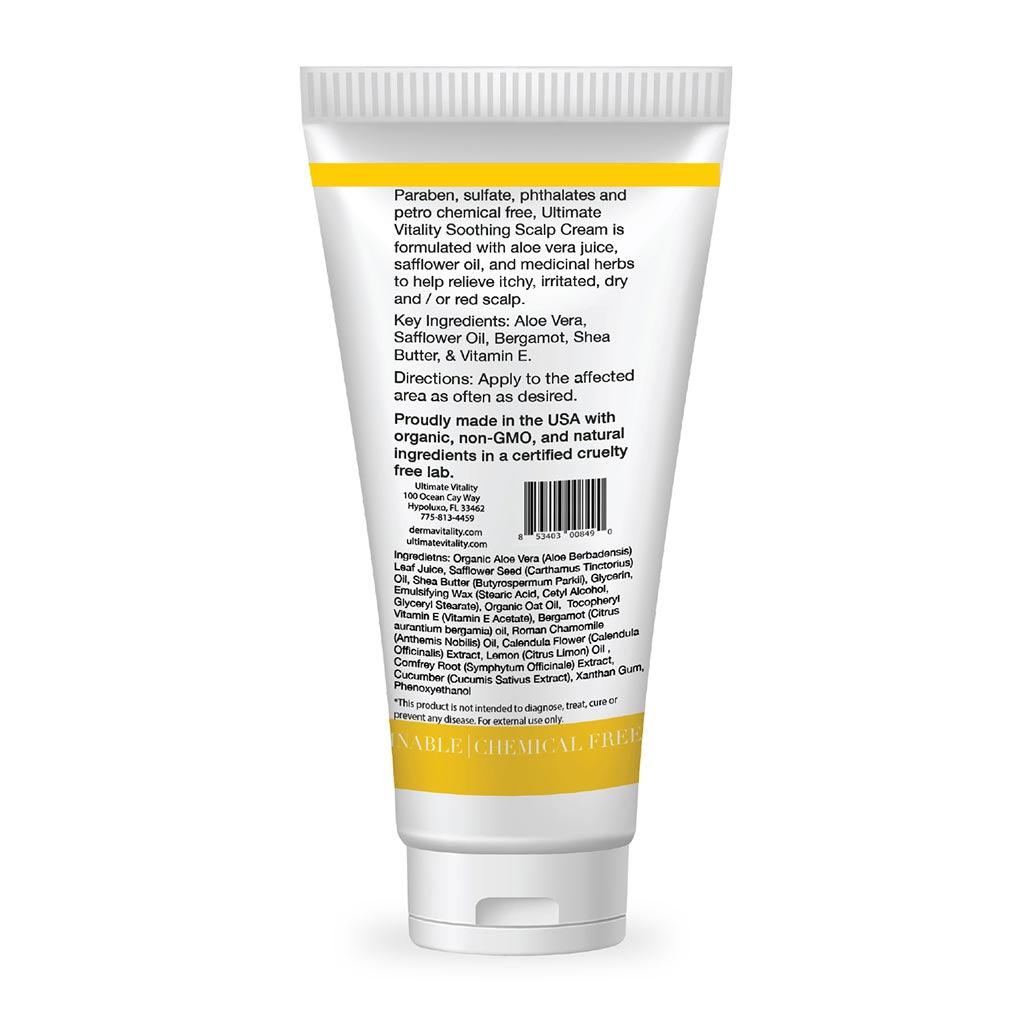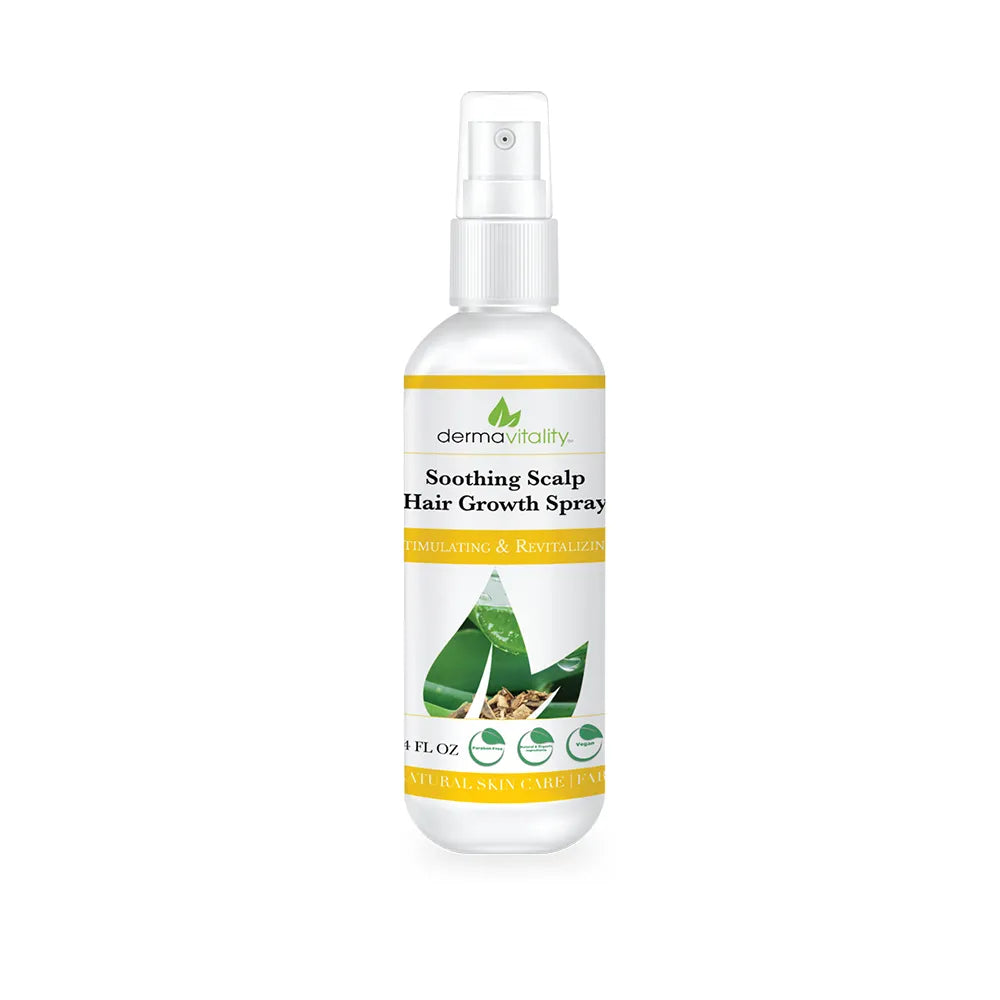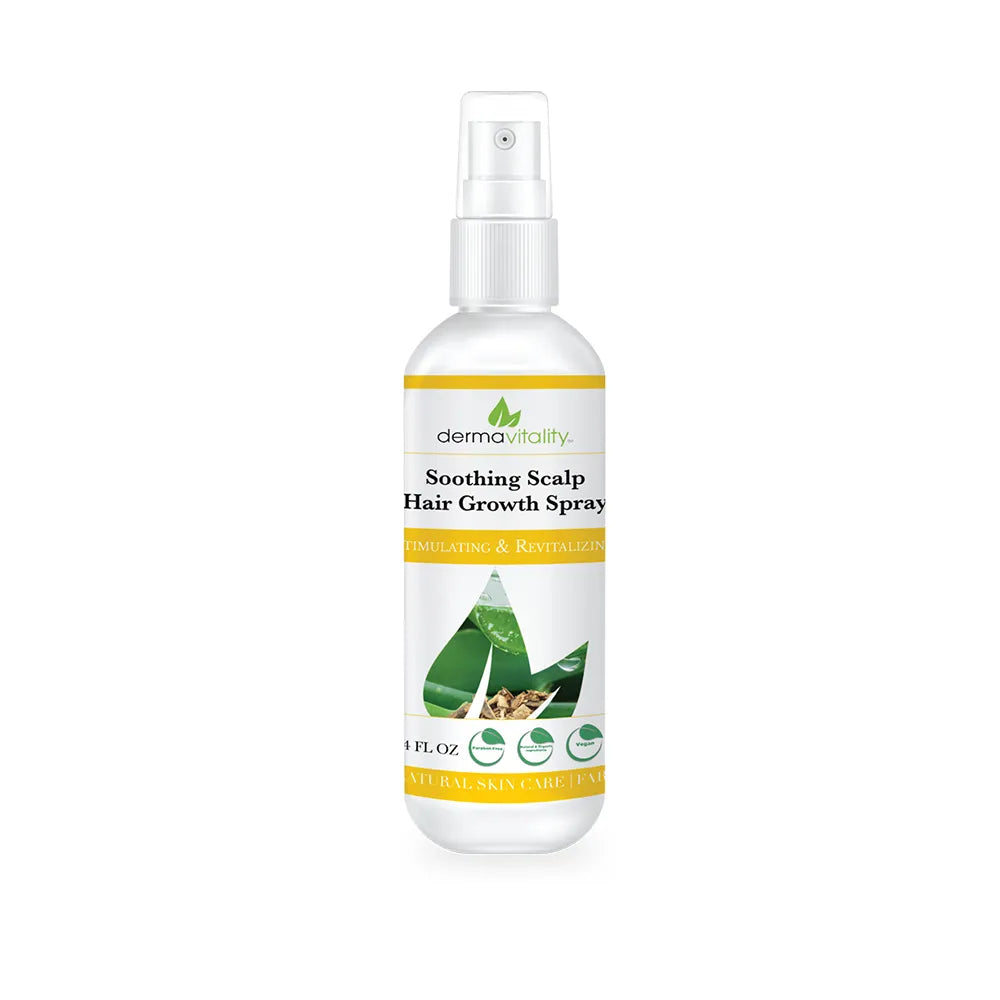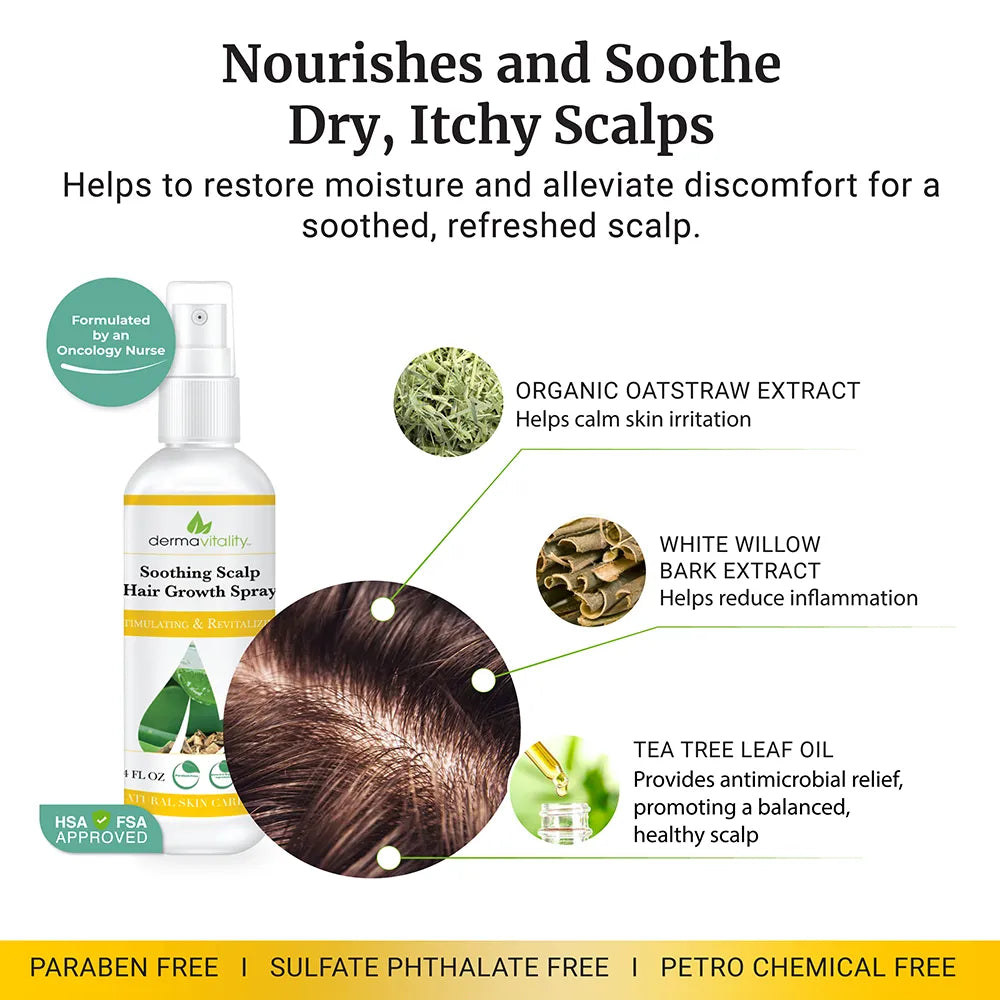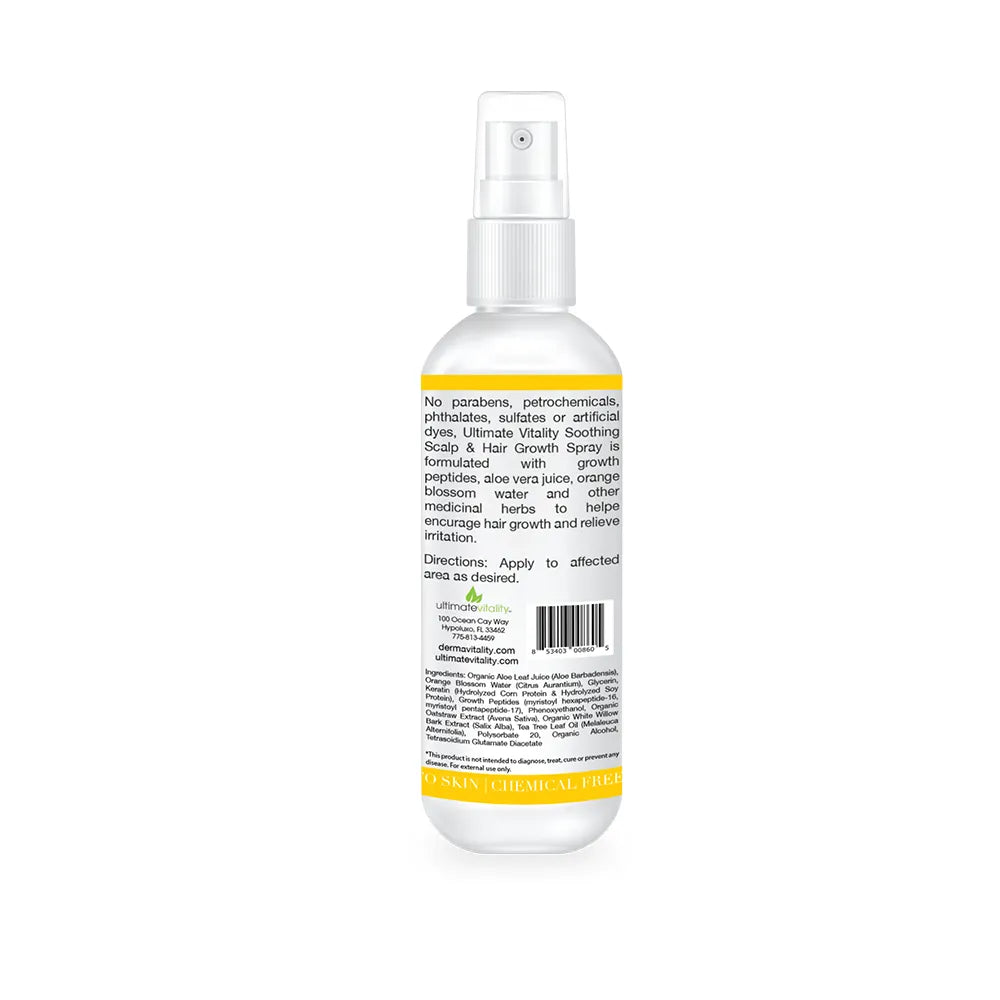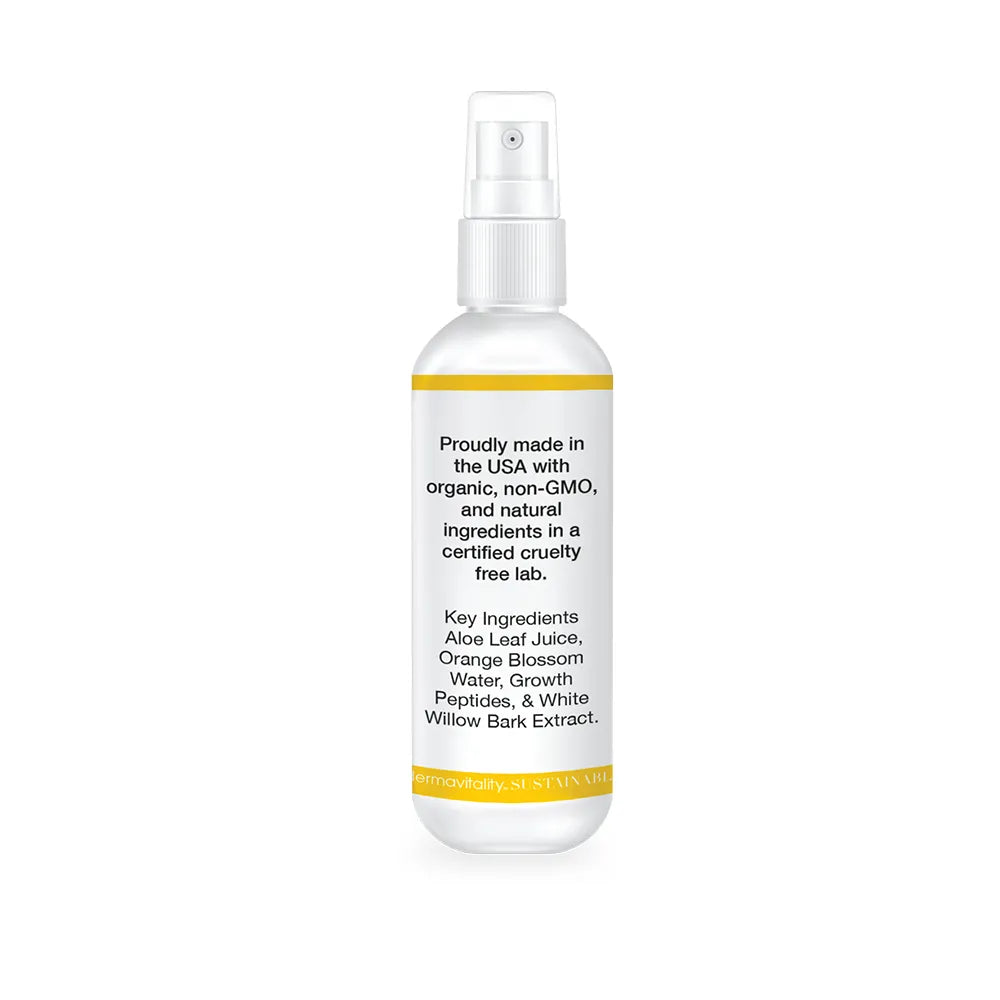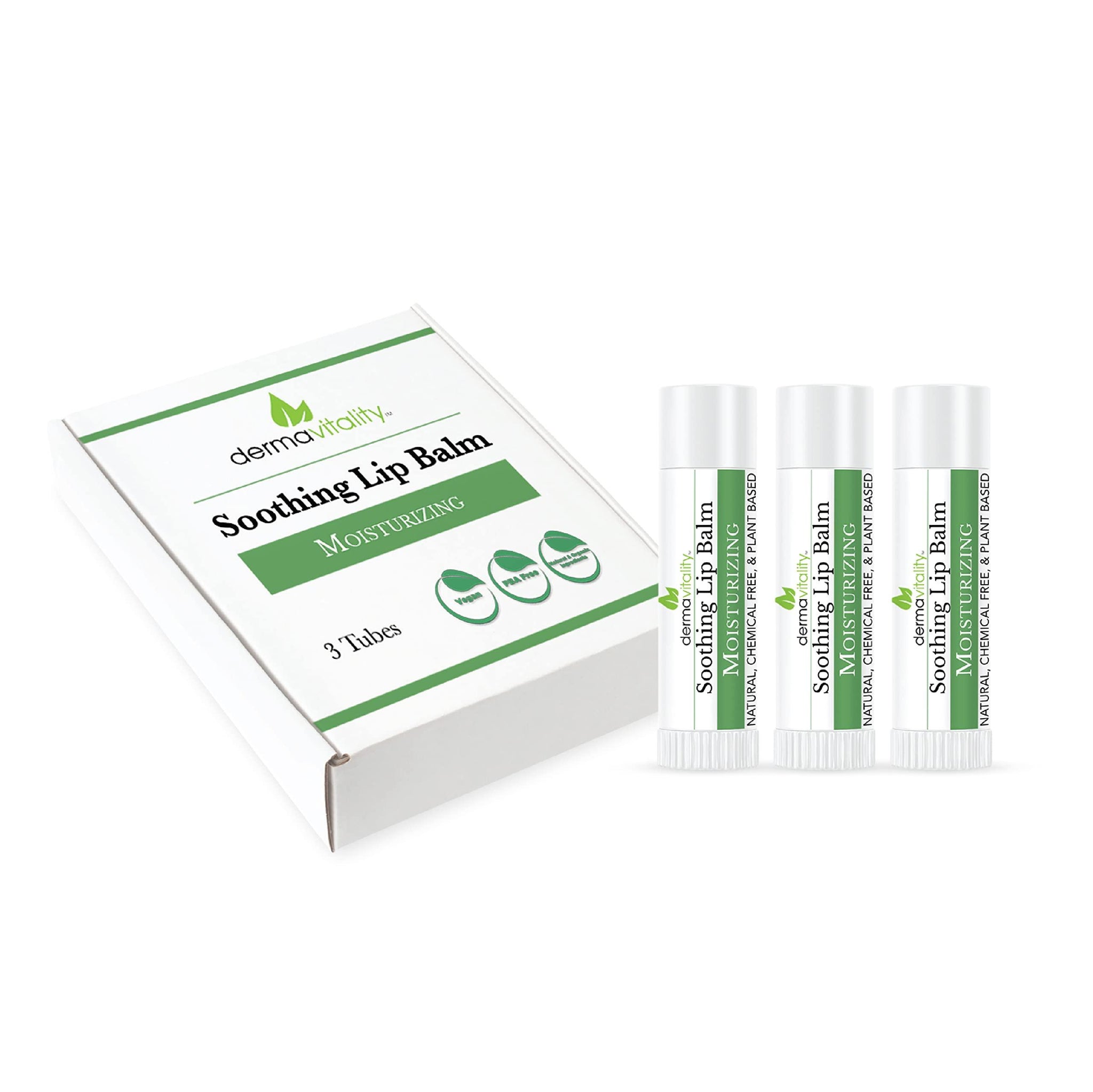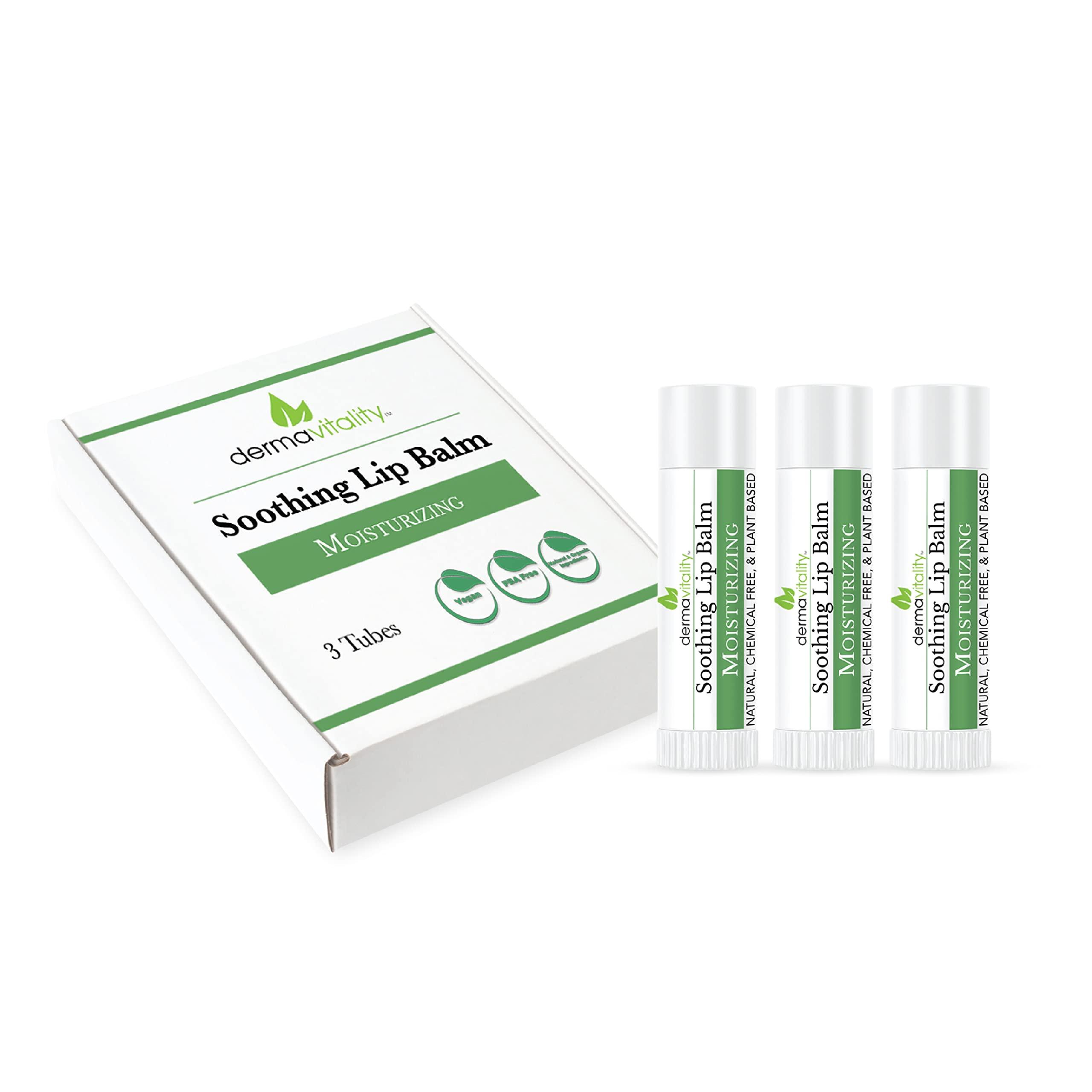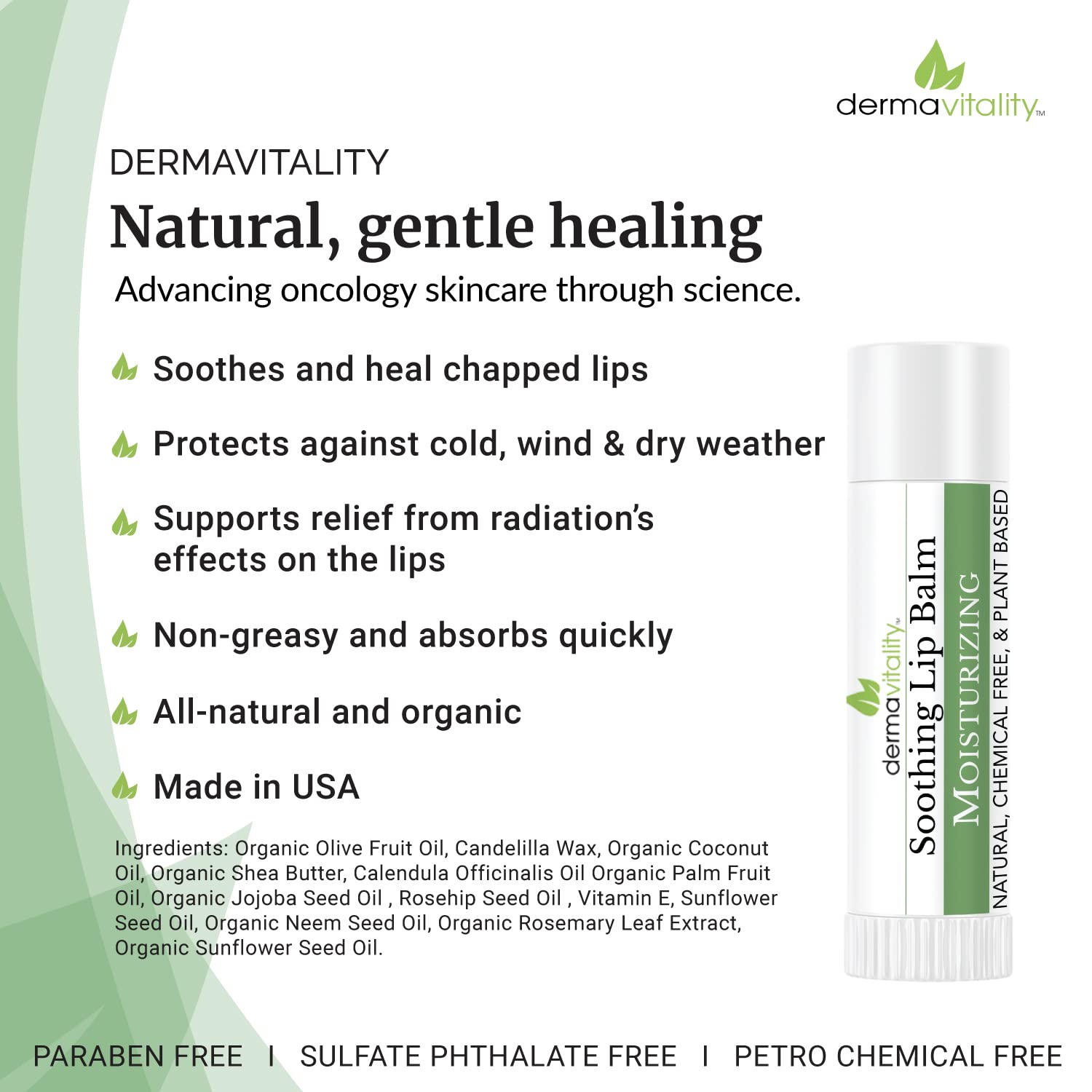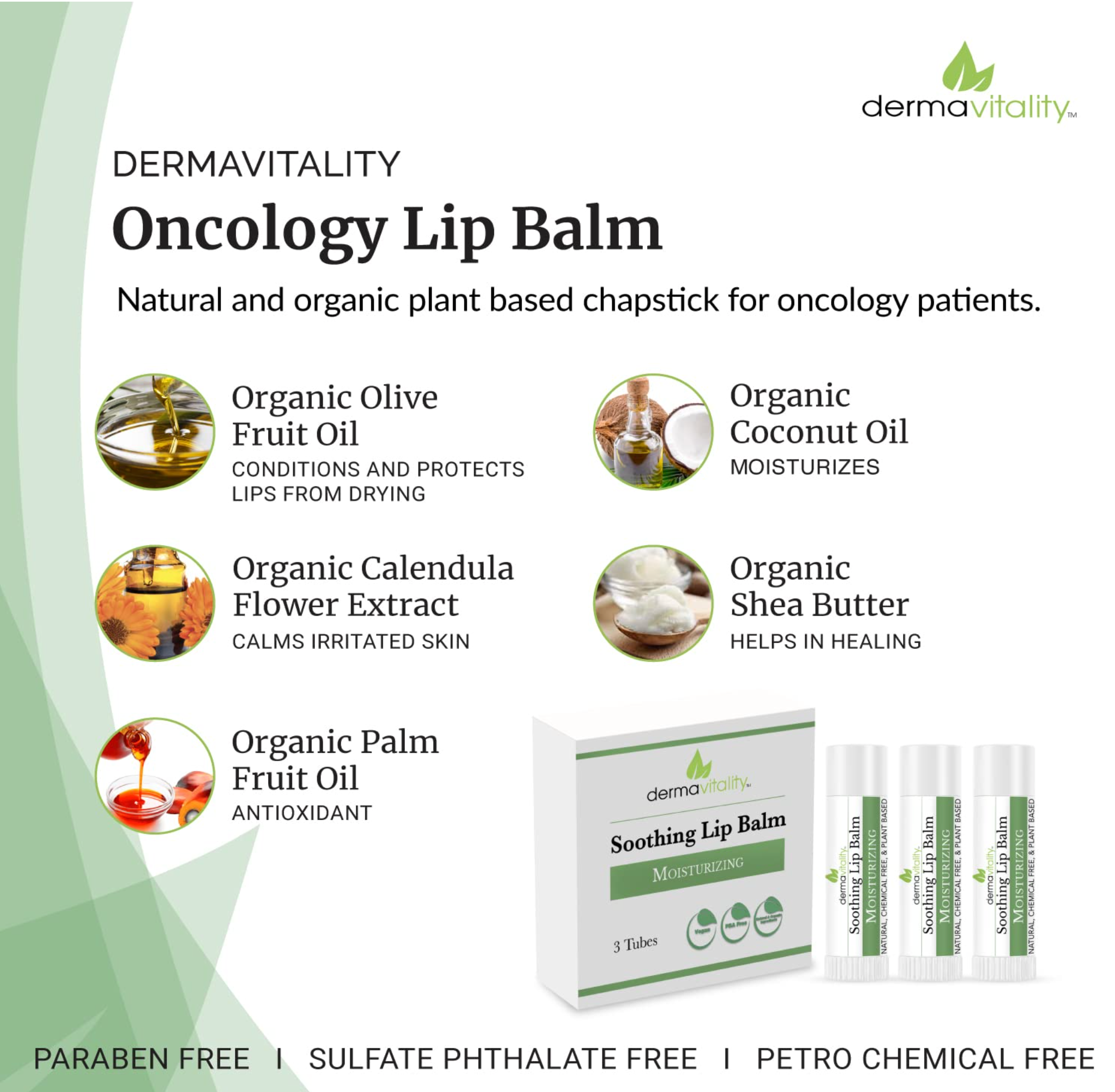Skin Care for Chemotherapy and Radiation Treatment
Skin Care for Chemotherapy
and Radiation Treatment
By Mark Brown, RN | Oncology Nurse & Co-Founder of Dermavitality
By Mark Brown, RN | Oncology Nurse &
Co-Founder of Dermavitality
Gentle Support for Skin Affected by Cancer Treatment
Cancer treatments such as chemotherapy and radiation go far beyond shrinking tumors—they impact your skin, the body’s largest organ. Dryness, redness, itching, sensitivity, and even painful rashes are common during treatment. As an oncology nurse, I’ve seen these issues up close—and I’m here to help you minimize discomfort and protect your skin through every phase.
This comprehensive guide is based on trusted protocols from MSKCC, MD Anderson, the American Academy of Dermatology (AAD), and oncology nursing standards—to give you practical, nourishing strategies that really work.


In this post, you’ll learn how to:
- Cleanse gently without damaging fragile skin
- Moisturize effectively before, during, and after treatment
- Prevent sun damage and sensitivity
- Heal and support damaged skin
- Choose nurse-approved products aligned with your treatment needs
Let’s dive into the essential steps you can take today to comfort and protect your skin during chemo and radiation.
Why Skin Needs Extra Care During Treatment
Chemotherapy targets rapidly dividing cells—unfortunately, that includes your skin cells and mucosal surfaces. As a result, your skin may feel tight, become flaky, shrink, or peel Useful Resources
Daily baseline skin care in the prevention, treatment, and supportive care of skin toxicity in oncology patients: recommendations from a multinational expert panel
How to Navigate Skin Care During Cancer Treatment
Sun Sensitivity During Chemotherapy


Radiation Therapy
Delivers energy to cancerous areas, but it also damages local skin cells. This often leads to radiation dermatitis, which may present as redness, desquamation (peeling), pain, or even blistering . According to MSKCC, these reactions can peak one to two weeks after finishing radiation.
How To Care for Your Skin During Radiation Therapy
Photosensitivity is also a concern—certain chemo drugs can make your skin more vulnerable to sunburn or rashes. This sensitivity may last months or even years after treatment ends.
Given this, it’s vital to adopt a gentle, proactive skincare routine to reduce discomfort, lower infection risk, and help your skin recover faster.
Cleansing: Keep It Simple and Gentle
Cleansing removes bacteria and dead skin cells—but aggressive cleansers can strip your skin’s delicate protective layer.
This can lead to irritation, stinging, and increased dryness. Daily baseline skin care in the prevention, treatment, and supportive care of skin toxicity.
- Use warm—not hot—water.
- Choose a mild, unscented cleanser (pH-neutral,
free of sulfates and dyes). - Use your hands, not a washcloth or loofah, to
avoid friction. - Gently rinse and pat skin dry with a soft towel.
- Do this once daily, ideally after a bath or shower.
- How to care for your skin during and after radiation therapy.
- Avoid scrubs, acids, and soaps with fragrance or alcohol
- Skip harsh tools (washcloths, sponges)
- Don’t remove radiation marks without your care team's approval
- Your urine is dark or infrequent
- Wash these areas before your radiation session
to avoid impacting radiation dose - If you notice stinging or redness after showering,
consult your nurse before changing products

Moisturizing: Build a Strong Skin Barrier
Evidence-Based Practice
Maintaining moisture before skin irritations start can significantly reduce radiation dermatitis severity.
Skin Care During Radiation Therapy
MD Anderson encourages regular moisturizing even pre-treatment
Choosing a Moisturizer
- Fragrance-free and hypoallergenic.
Essential oils provide natural therapeutic benefits like calming or anti-inflammatory effects, while added fragrance offers scent only and often includes synthetic chemicals that may irritate sensitive skin.
- Emollients like Calendula and shea butter,
- Products like Aquaphor and petrolatum-based ointments offer moisture but lack clinical evidence supporting their effectiveness for managing cancer treatment–related skin side effects.
- Avoid lanolin if sensitive

How Dermavitality Products Support Your Skin During Chemo and Radiation
Dermavitality offers a range of soothing, plant-based solutions that support skin health during chemo and radiation. Many of these items also make a thoughtful gift for someone going through chemo, helping them feel cared for while managing treatment side effects.

Formulated by Nurses
- Created with direct input from oncology professionals who understand treatment side effects firsthand.
Gentle, Natural Ingredients
- We use calming botanicals like aloe vera, calendula, chamomile, and cucumber extract—known for their anti-inflammatory and skin-repairing properties.
Safe for Radiation and Chemo-Treated Skin
- Our radiation burn creams are non-greasy, fast-absorbing, and safe to use around treatment sites (but always check with your care team for open wounds or active radiation fields).
Customer-Tested, Nurse-Approved
- Thousands of patients have trusted our creams to relieve dryness, burning, peeling, itching, and inflammation caused by chemo and radiation.
At Dermavitality, we’ve worked closely with oncology nurses and patients to develop targeted, plant-based solutions that support the unique skin needs of people undergoing cancer treatment. Our formulas are specifically designed to soothe, protect, and restore the skin—without harsh ingredients that can irritate already compromised skin barriers.
“As a nurse, I designed these products to do what I couldn’t always do at the bedside—offer immediate, gentle relief and restore dignity through comfort.”
– Mark Brown, RN


When to Apply
- Apply twice daily (morning/night) and after bathing
- Avoid within two hours of radiation therapy
- Don’t apply on open wounds or broken skin unless prescribed by your care team
Nursing Tip
- Squeeze a small amount into your palm, warm it, then gently pat onto skin—avoid rubbing.
Special Strategies for Radiation Dermatitis
What It Looks Like
Common signs include:
- Early: mild redness, warmth
- Progressing: dryness, itching, peeling
- Severe: heavy flaking, blistering, or wet desquamation How to care for your skin during radition therapy
Maintaining moisture before skin irritations start can significantly reduce radiation dermatitis severity. Skin Care During Radiation Therapy MD Anderson encourages regular moisturizing even pre-treatment.

Nursing Best Practices
- Begin moisturizing the treated area 1–2 weeks before radiation starts to condition and strengthen the skin.
- Use Dermavitality Radiation Relief Cream, formulated with calendula,
aloe, and chamomile for gentle pre-treatment hydration.
- Wash with lukewarm water and a mild, fragrance-free cleanser—never scrub.
- Pat the area dry with a soft towel.
- Avoid removing radiation markers unless directed.
- Apply a non-irritating, plant-based moisturizer like Dermavitality after bathing and before bed.
- Avoid applying lotion within 2 hours before radiation sessions unless cleared by your care team.
- Dermavitality Soothing Radiation Relief Spray is a great option to add to you skin care regiment
- Skip products with alcohol, synthetic fragrance,
or essential oils in high concentrations.
Please not that Dermavitality uses cetyl acohol
a skind conditioning agent in its formulas - Do not use petrolatum-based products like
Aguaphor unless prescribed—they can trap heat and lack evidence for radiation skin support.
- Choose creams with calendula, chamomile, cucumber extract, and shea butter — ingredients found in Dermavitality that
help reduce inflammation and redness.
- Wear loose, soft cotton clothing.
- Avoid tight straps, underwires, or heat packs on the treated area.
- Watch for signs of moist desquamation (weeping skin), peeling, or blistering.
- Apply a barrier repair cream (like Dermavitality’s Radiation Relief) or use prescribed silicone-based dressings if directed by your provider.

Sun Protection & Photosensitivity
Chemo and radiation can increase your sensitivity to sunlight—leading to easy sunburn or hyperpigmentation. UV protection MD Anderson
Why It’s Crucial
- Use broad-spectrum mineral sunscreen (SPF 30+) daily, especially on treated skin
- Reapply every 2 hours or after sweating
- Wear sun-protective clothing, wide-brim hats, UV-filtering layers
- Stay in shade and avoid peak sun hours
- Be cautious around reflective surfaces (water, snow)—even in winter
Recognizing and Caring for Skin Reactions
Signs to Watch
- Bright red or tender areas
- Peeling, crusting, open sores
- Oozing, bleeding, blistering
- Pain or heat in the skin
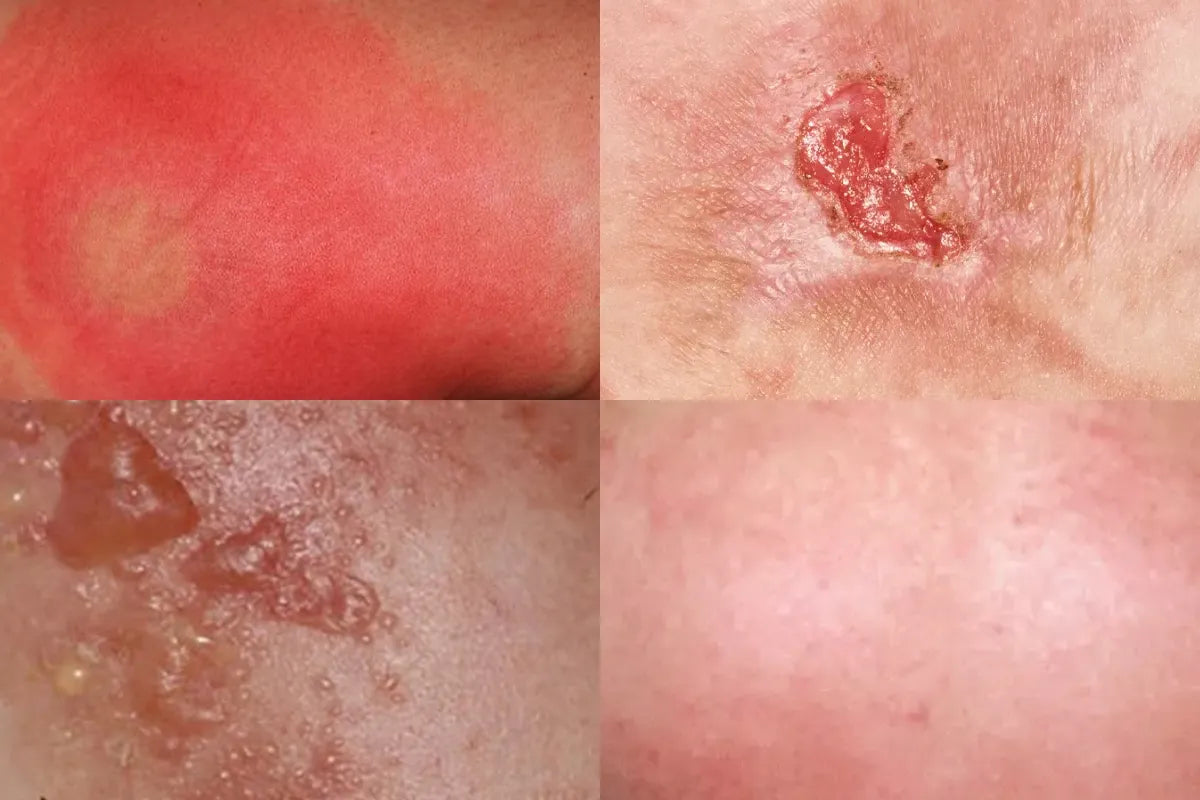

When to Contact Your Care Team
- Persistent or worsening symptoms
- Signs of infection: warmth, increased
pain, fever, pus - Swelling or induration
Additional Skin Support Tips
Post-Treatment Skin Recovery
Signs to Watch
After treatment, your skin may remain dry, discolored, or sensitive for months—even years.
Effective Recovery Steps
- Continue moisturizer twice daily. See our blog post The Benefits of Using Aqueous Cream for 6 Months After Radiation Therapy.
- Apply silicone gel/sheeting to help scars
- Use mineral sunscreen year-round
- See a dermatologist for persistent issues or scarring
Routine Checkups
Inform your care team of any late changes—they can prescribe targeted treatments for pigmentation, telangiectasia, or cancer surveillance.

Nutritional & Skin Care Connections
Cancer treatments like chemotherapy and radiation don’t just affect what's inside—they impact your skin in powerful ways. Dryness, flaking, and sensitivity are often made worse by dehydration and poor nourishment.
Final Words from a Nurse
Caring for your skin isn’t just a skincare ritual—it’s essential treatment side effect management. By using gentle cleansing, moisturizing early and often, protecting from sun, and staying vigilant for changes, you can greatly reduce discomfort and support healing.
Stay proactive, be kind to your skin, and reach out whenever you’re unsure. You’ve got this—and we’re here to help.

Final Words from a Nurse

Caring for your skin isn’t just a skincare ritual—it’s essential treatment side effect management. By using gentle cleansing, moisturizing early and often, protecting from sun, and staying vigilant for changes, you can greatly reduce discomfort and support healing.
Stay proactive, be kind to your skin, and reach out whenever you’re unsure. You’ve got this—and we’re here to help.
Disclaimer
This content is for informational purposes only and is not intended as a substitute for professional medical advice, diagnosis, or treatment. Always consult your physician, advanced practice nurse, or other qualified healthcare provider with any questions you may have regarding a medical condition or treatment.





